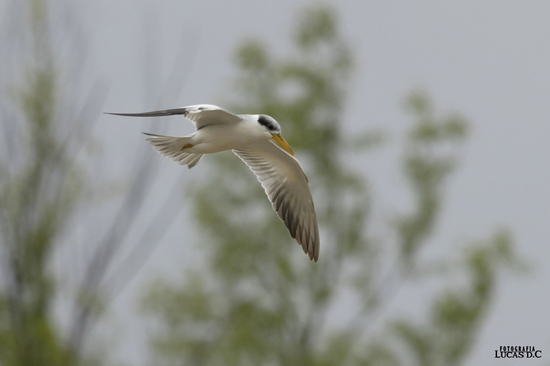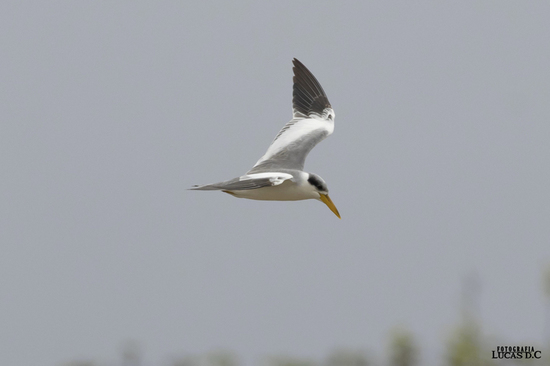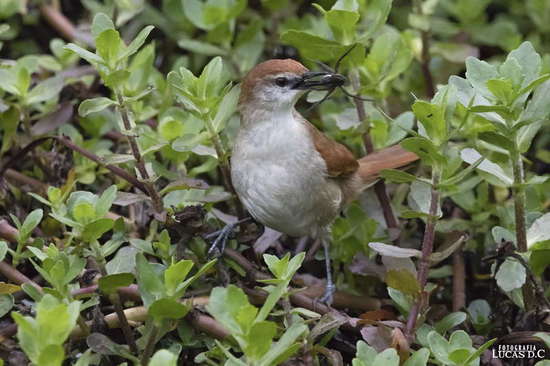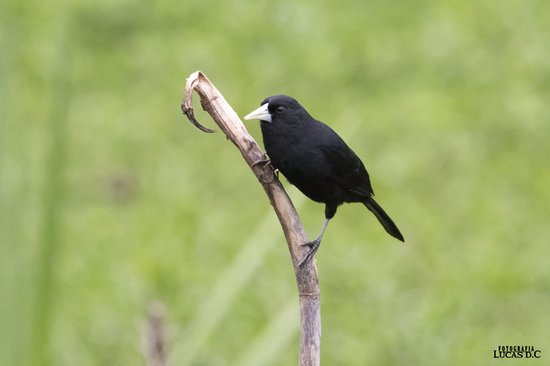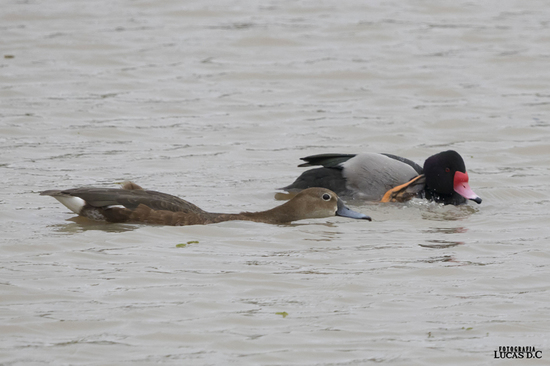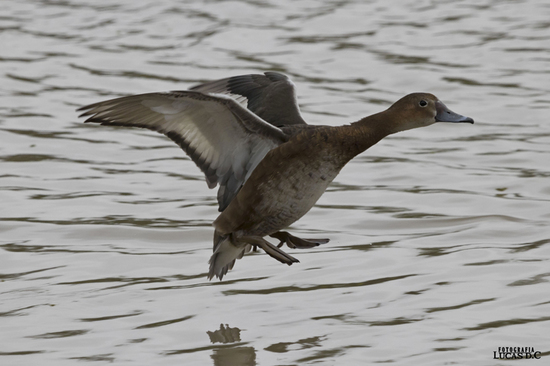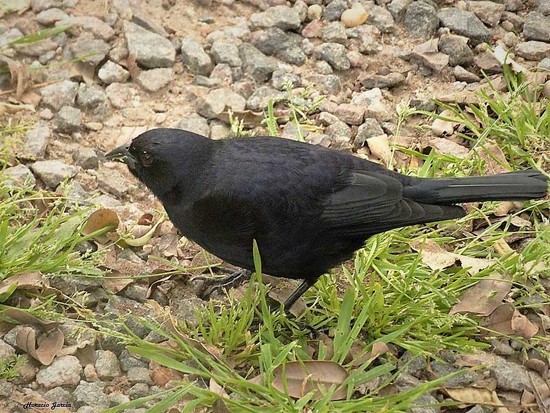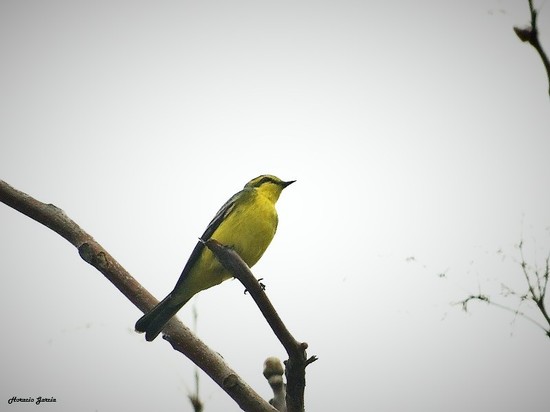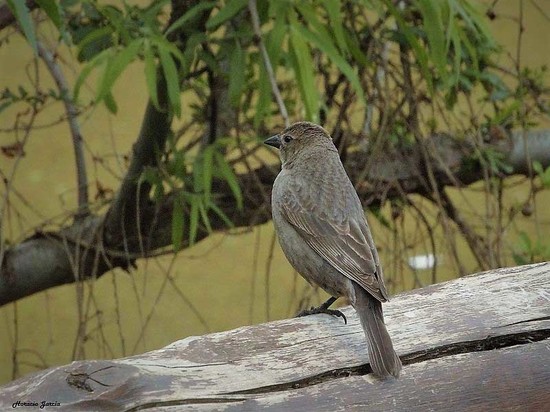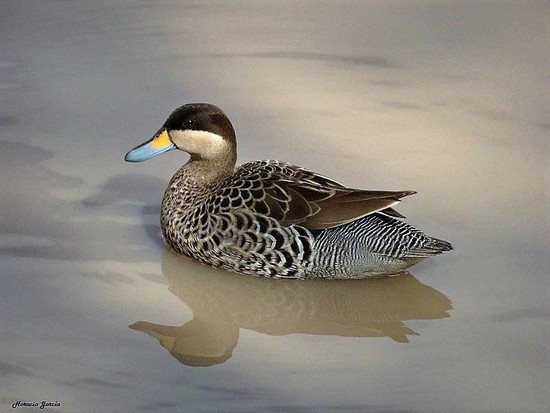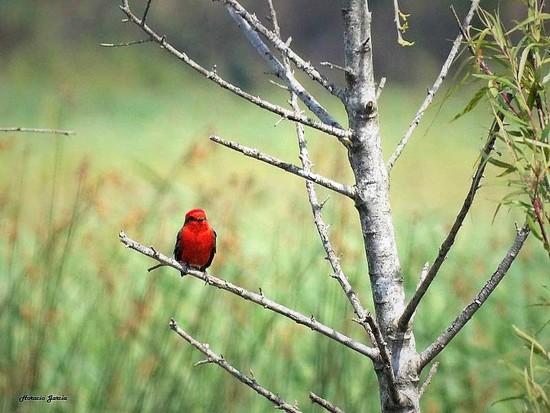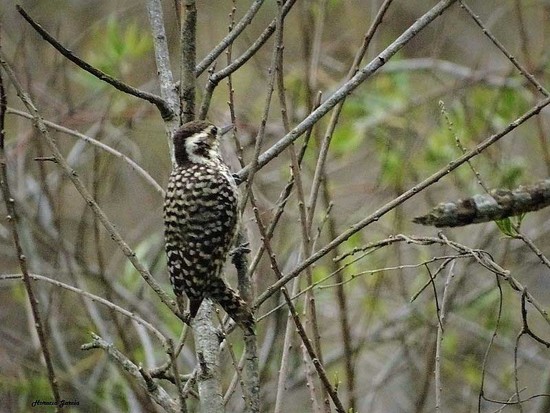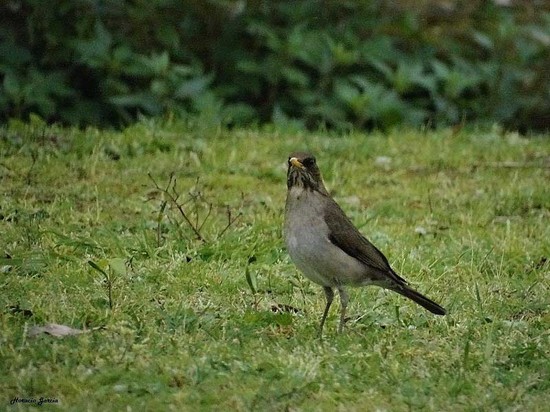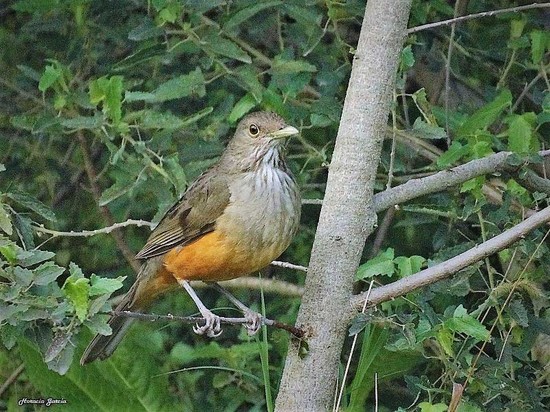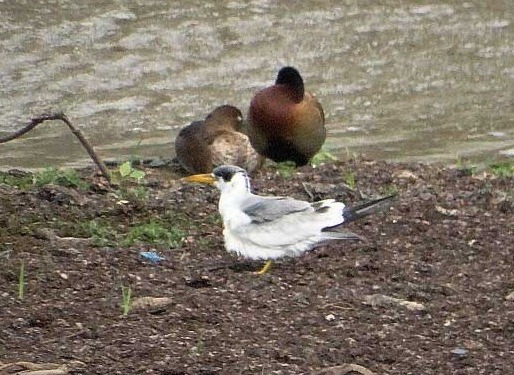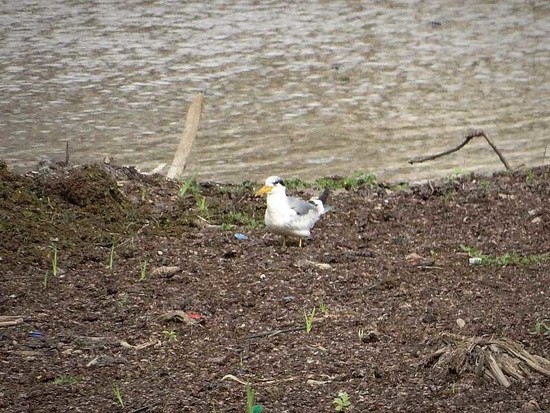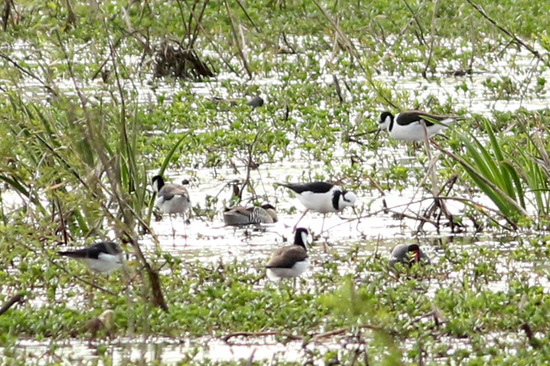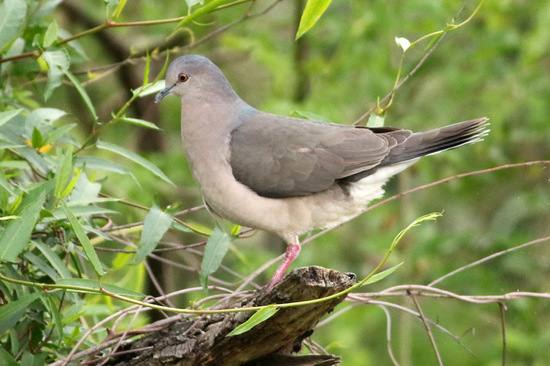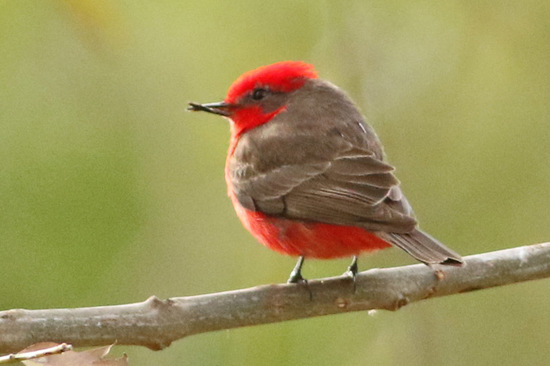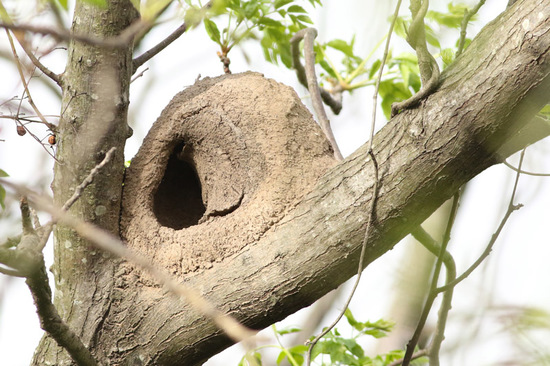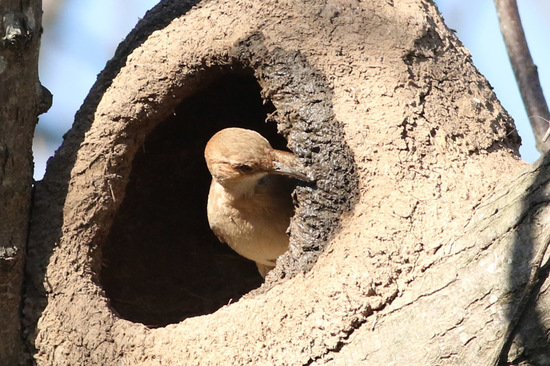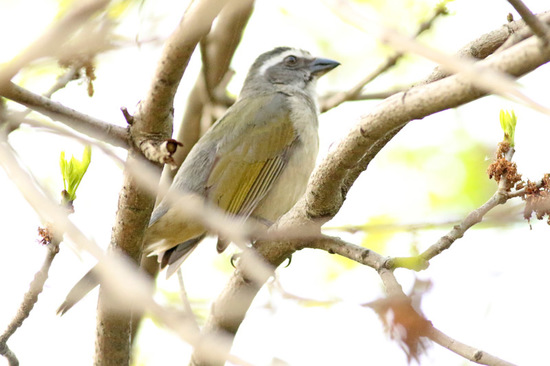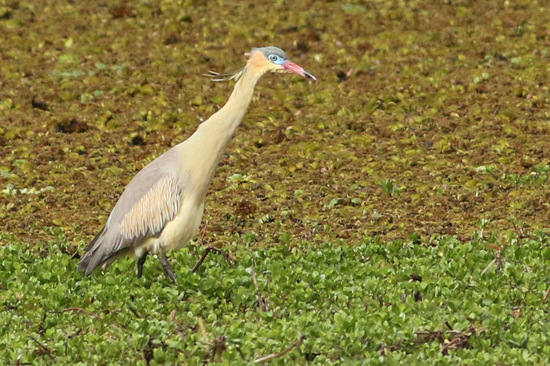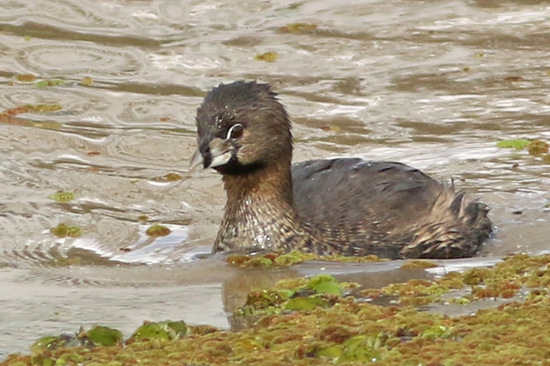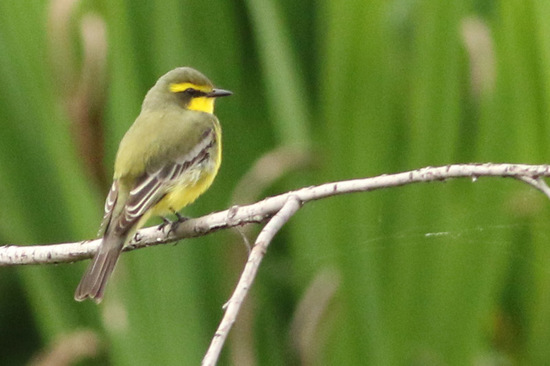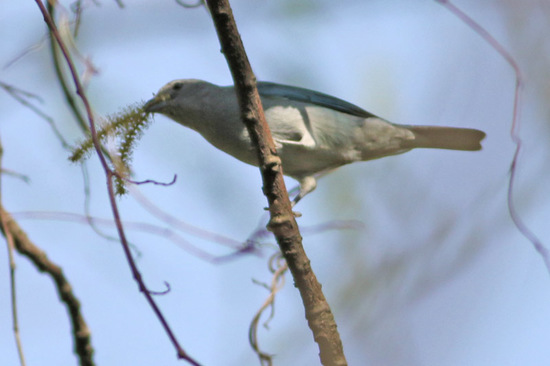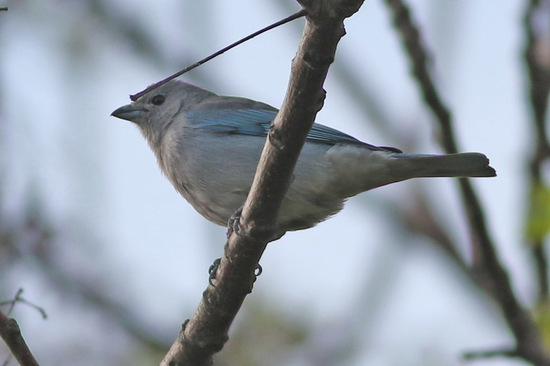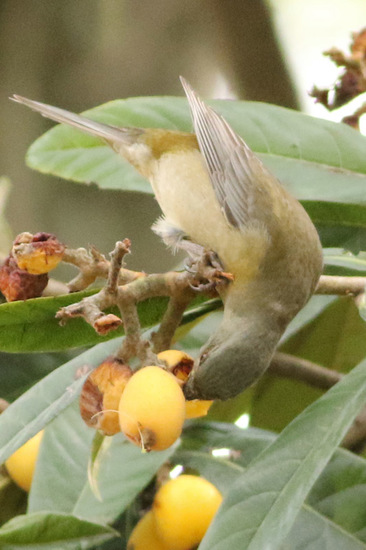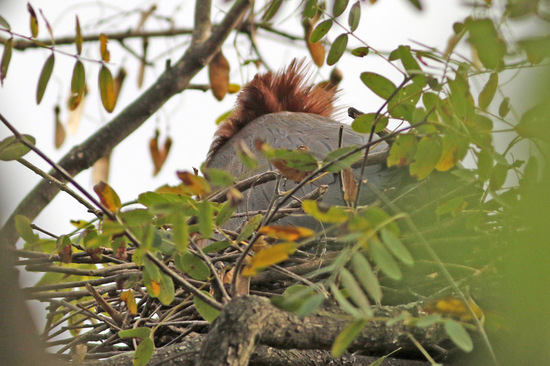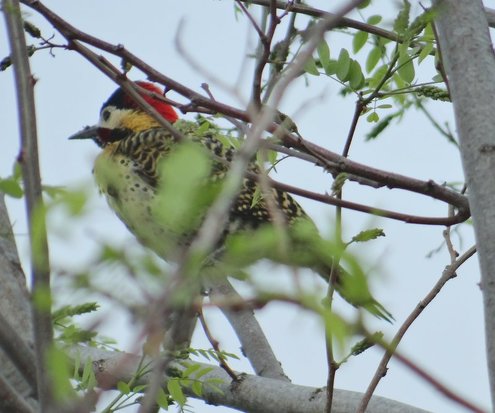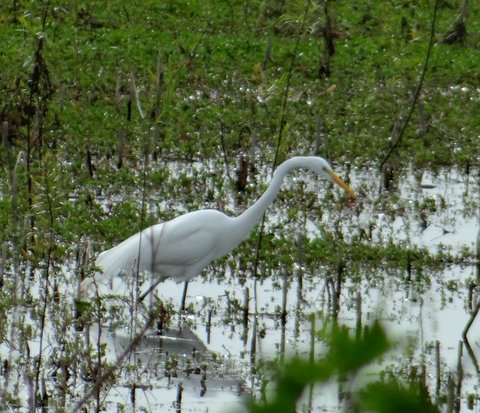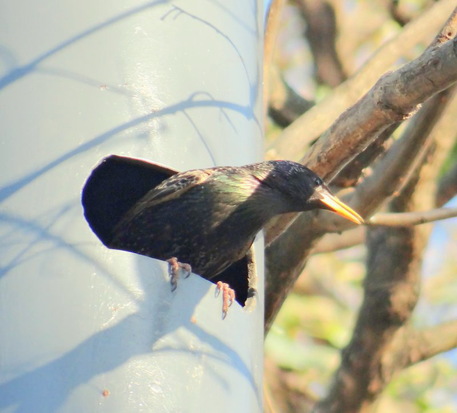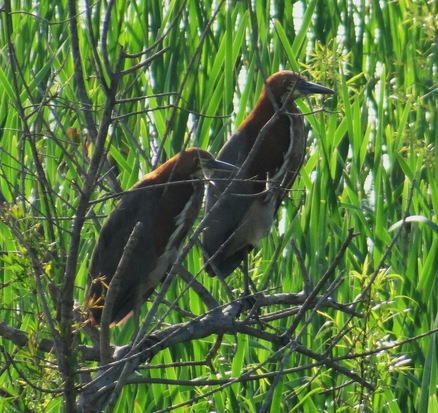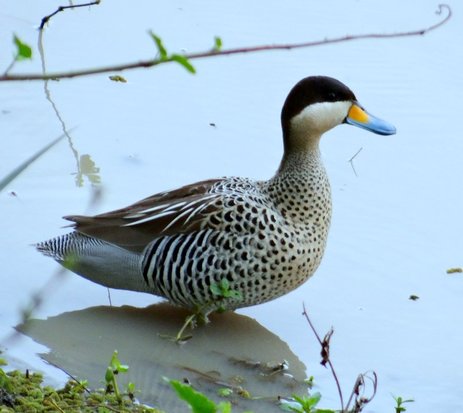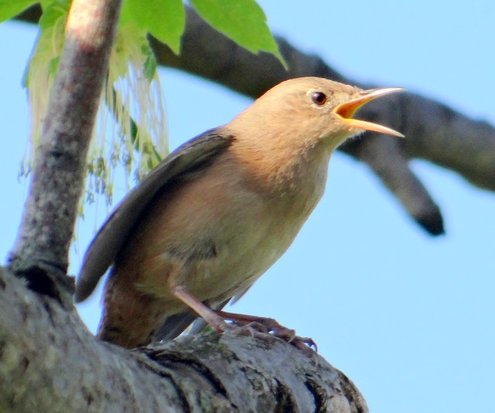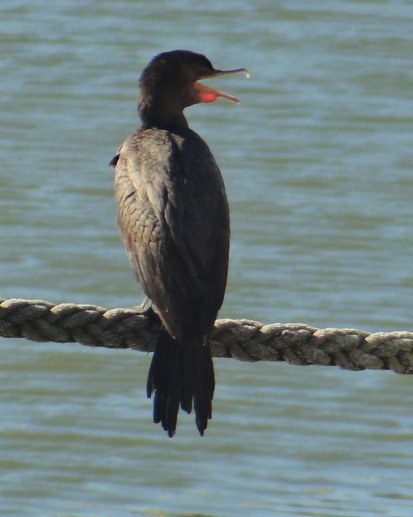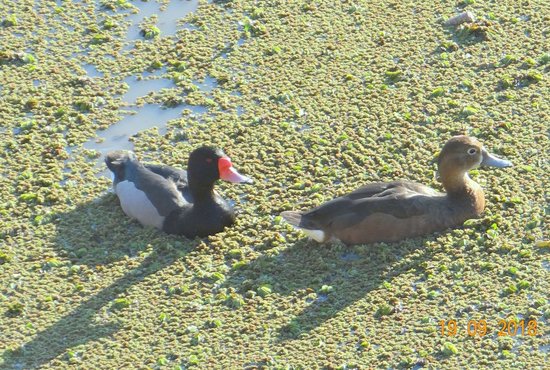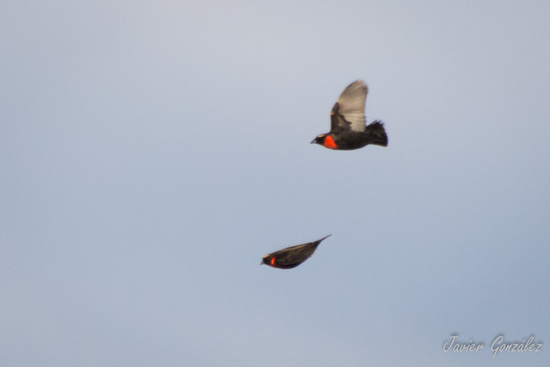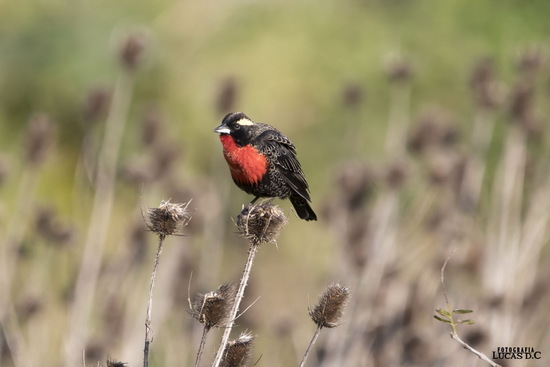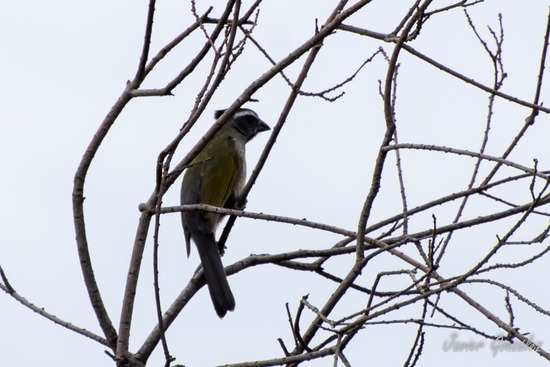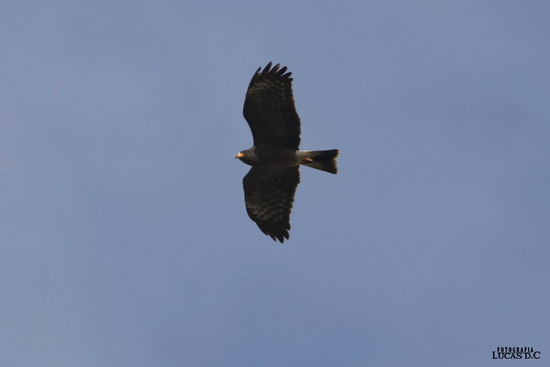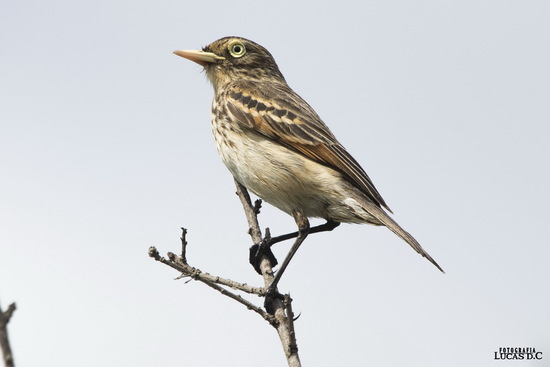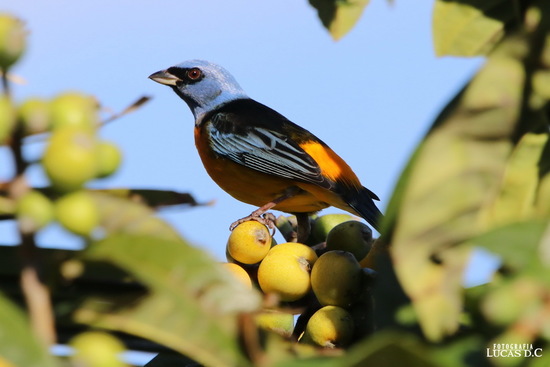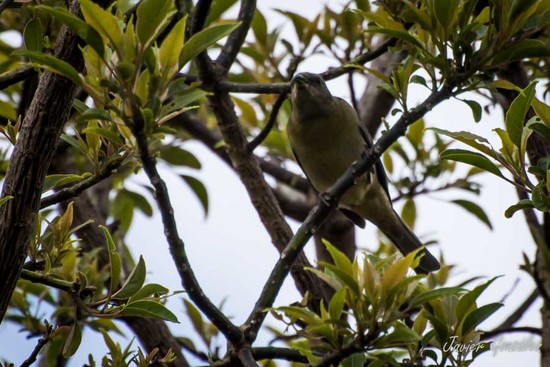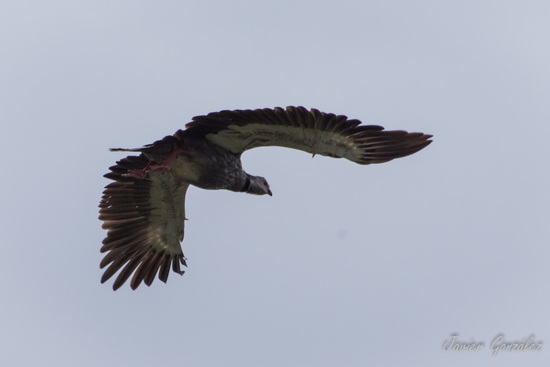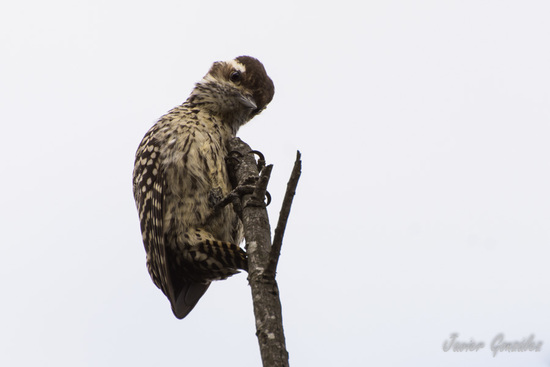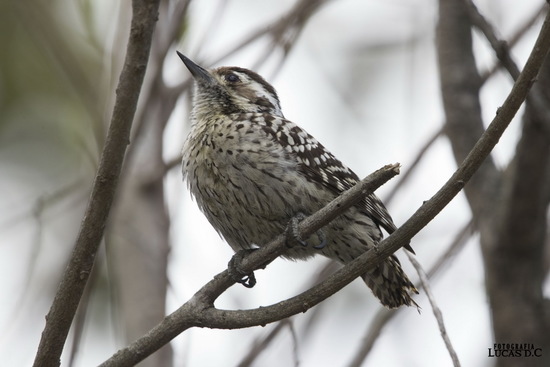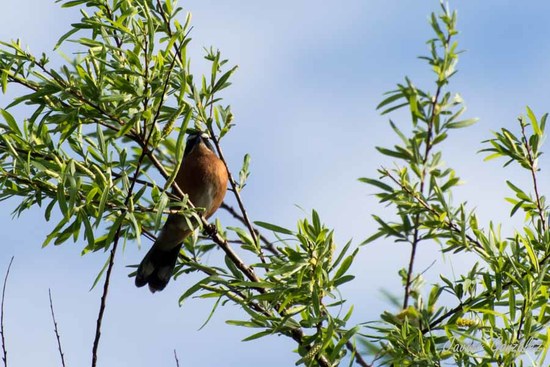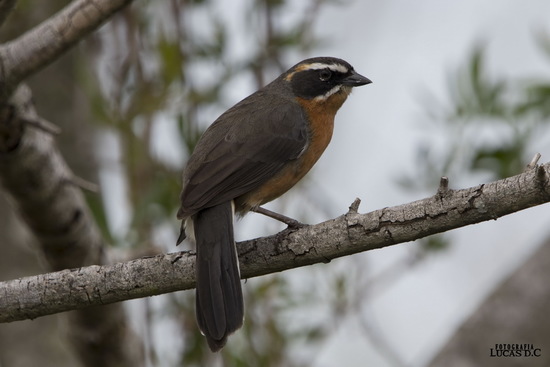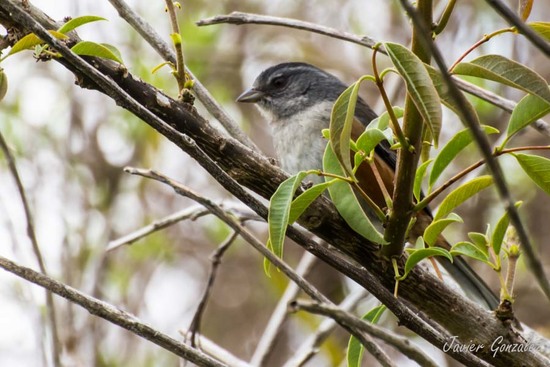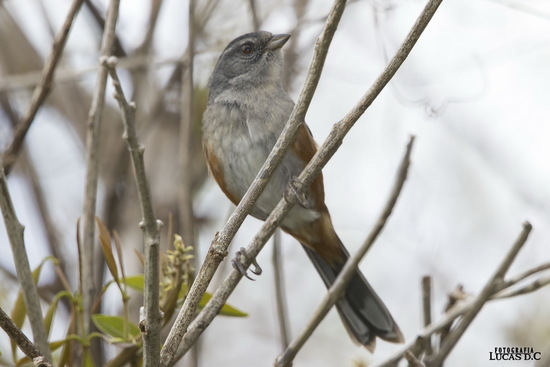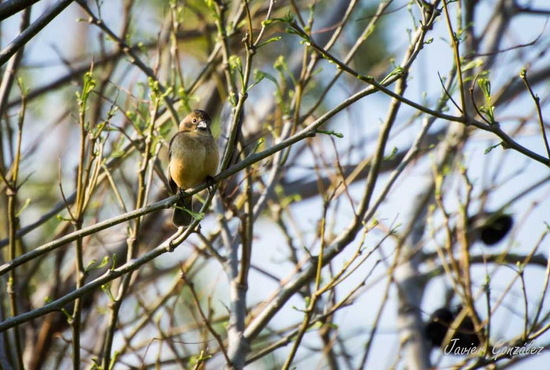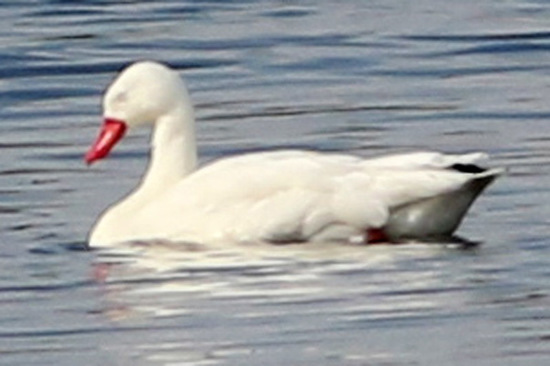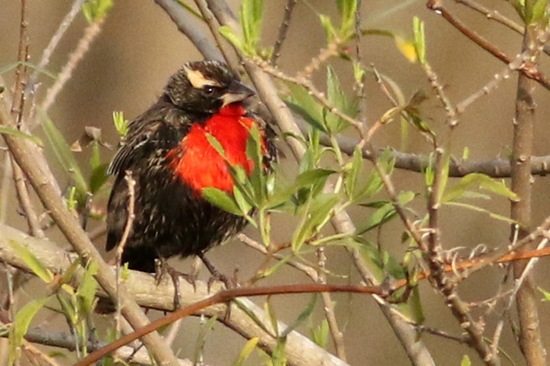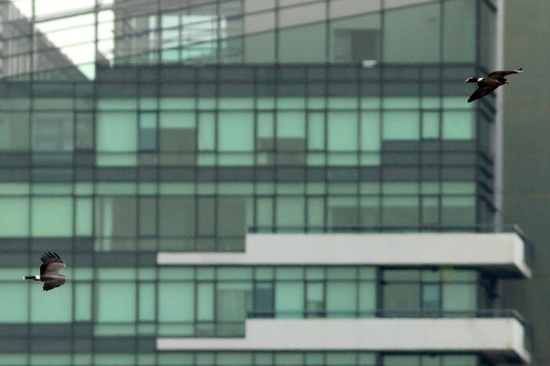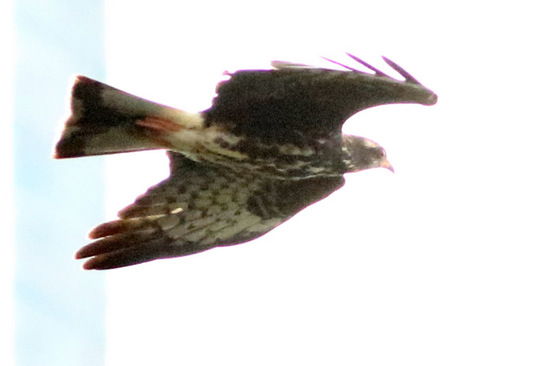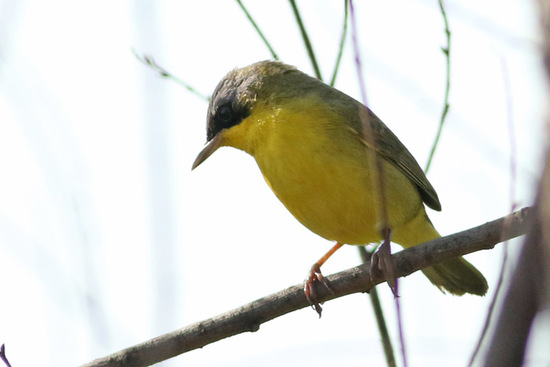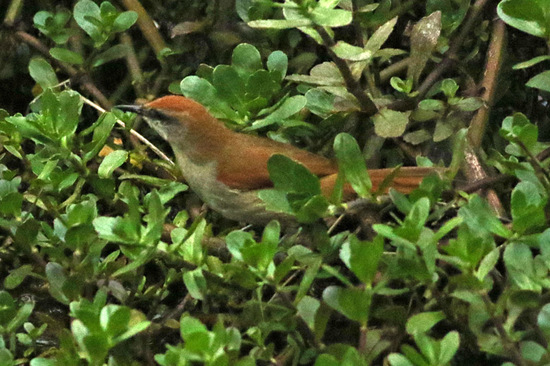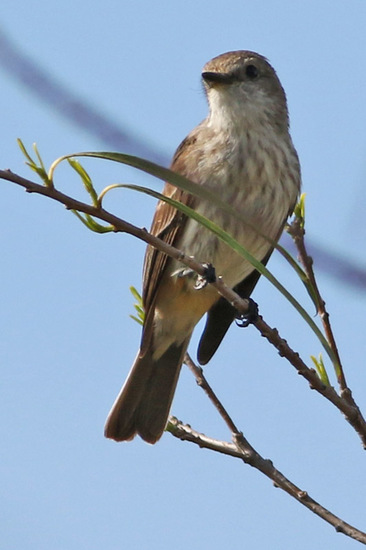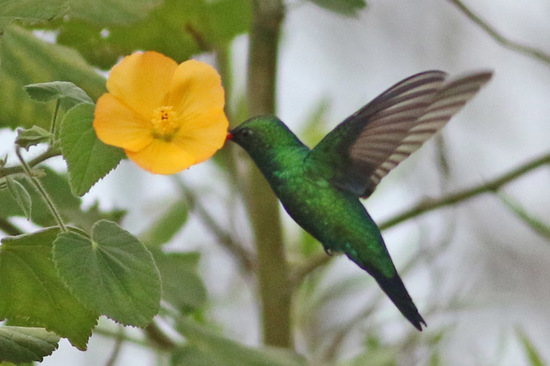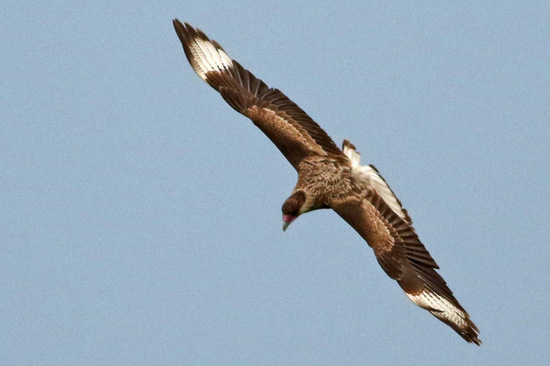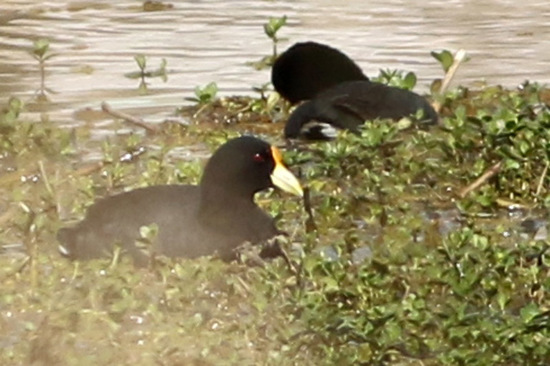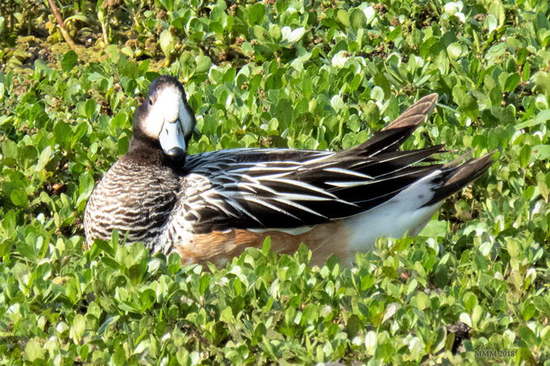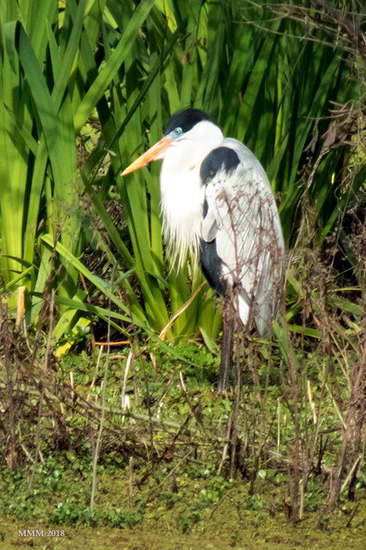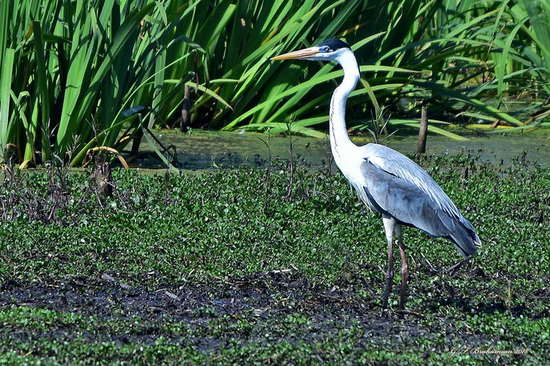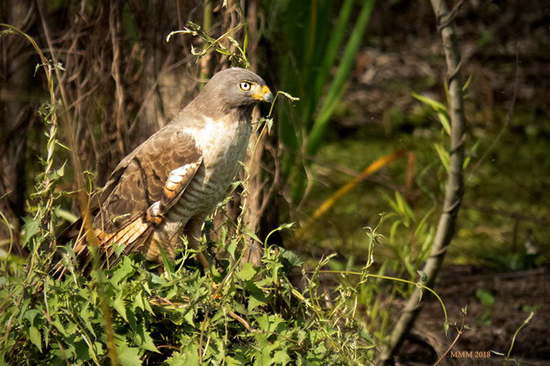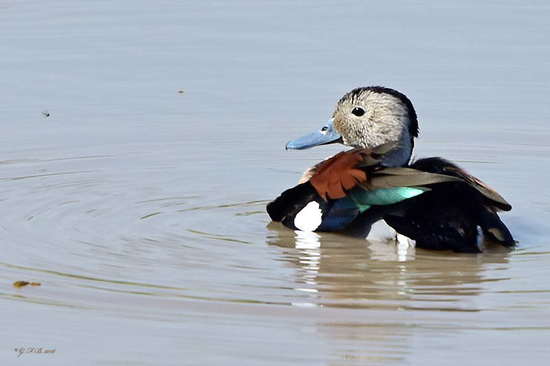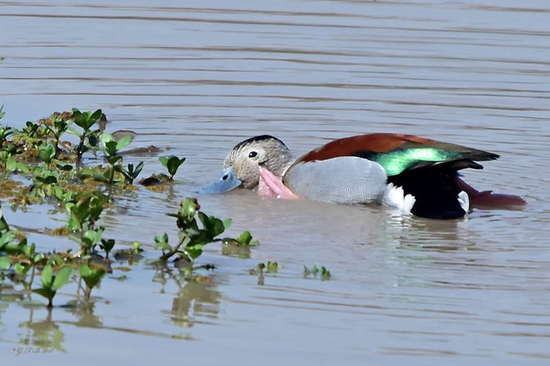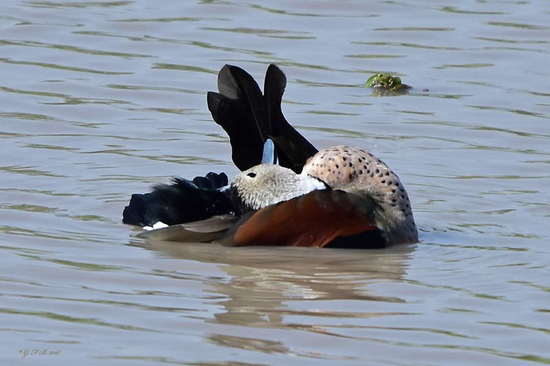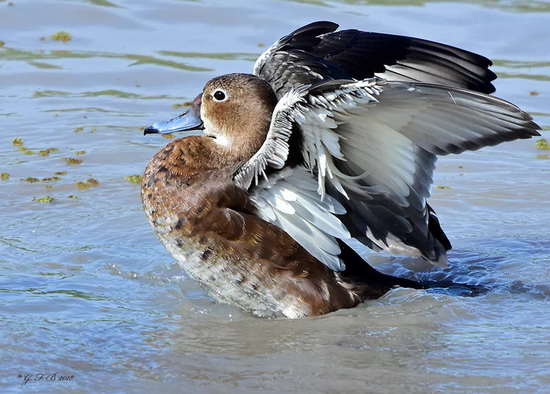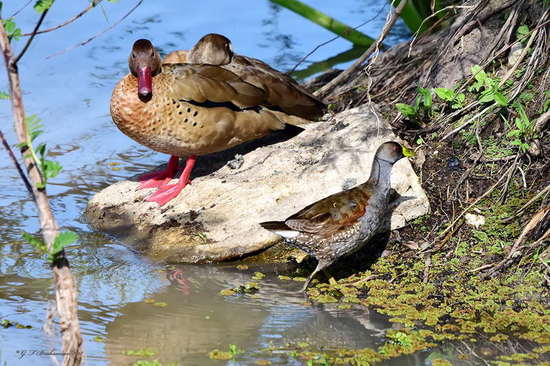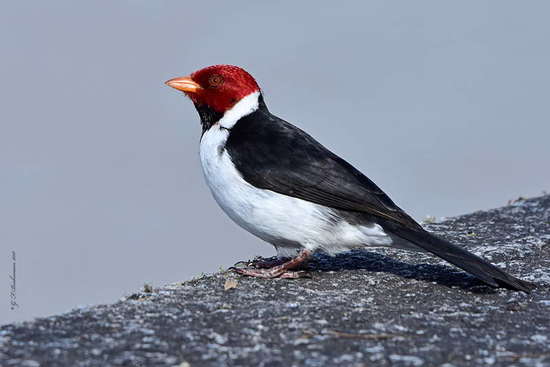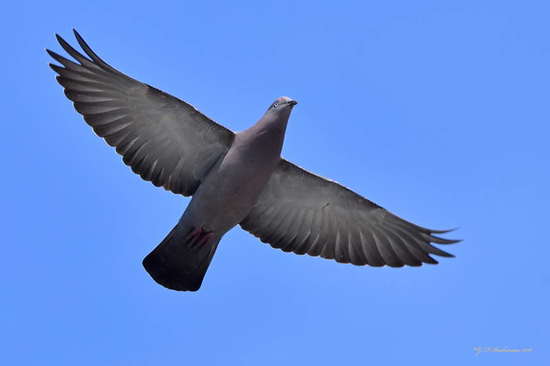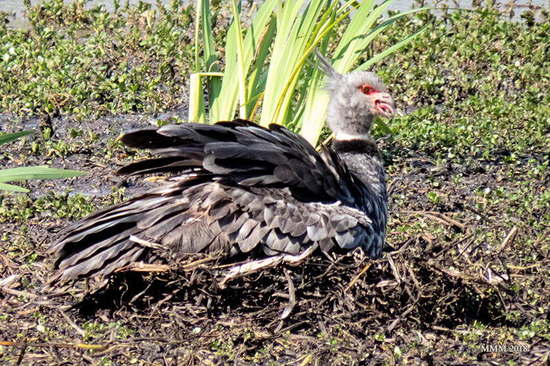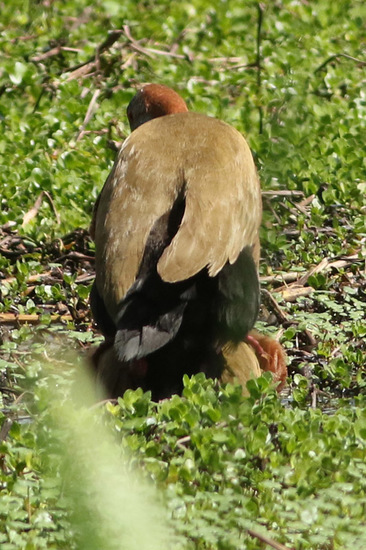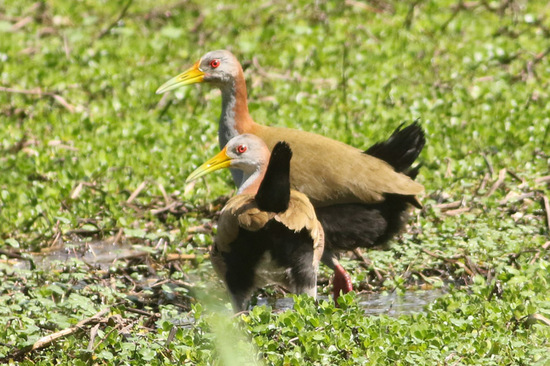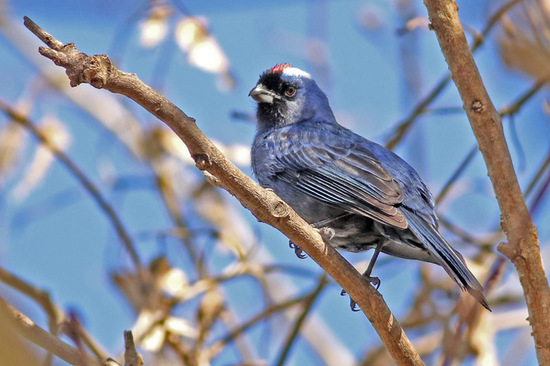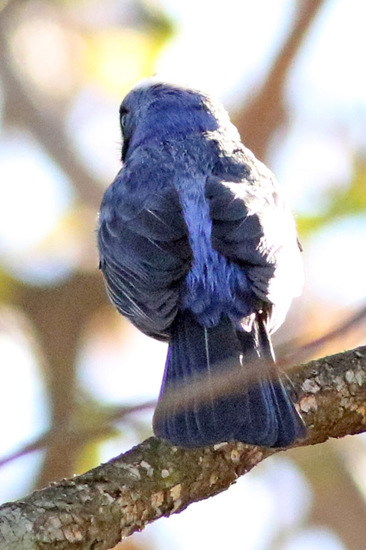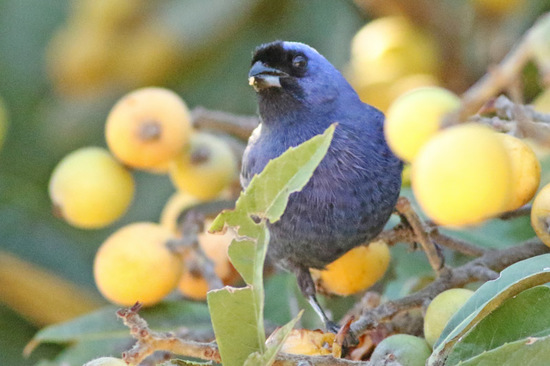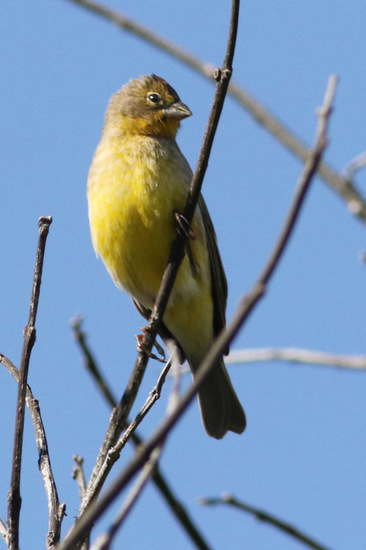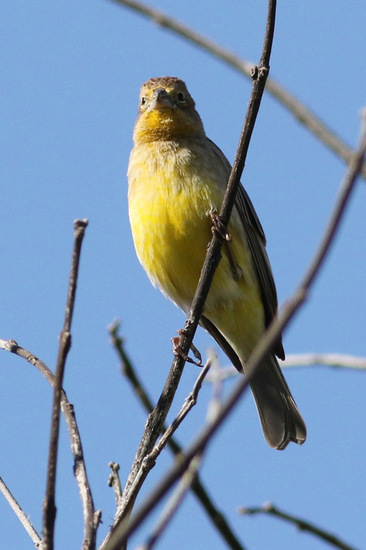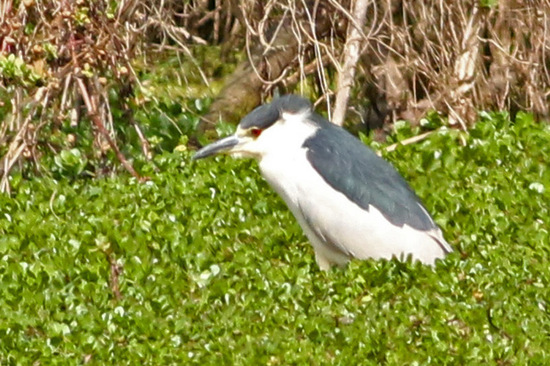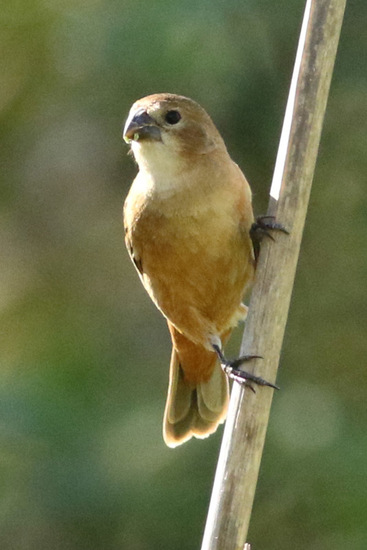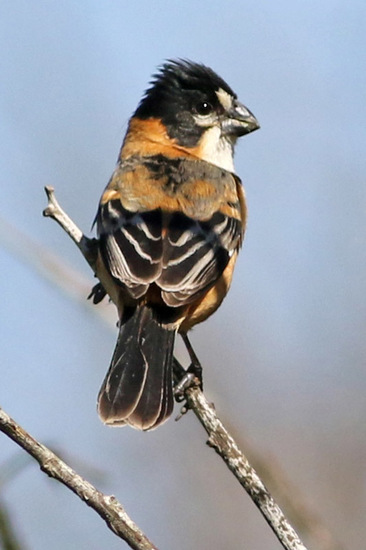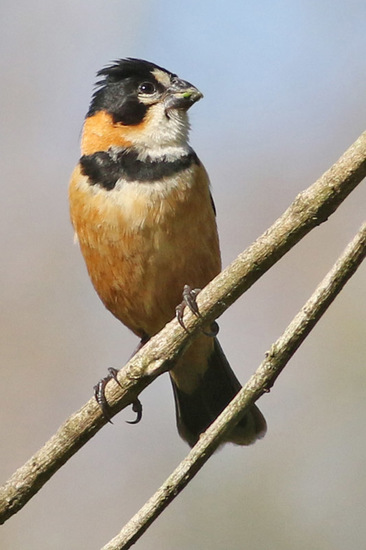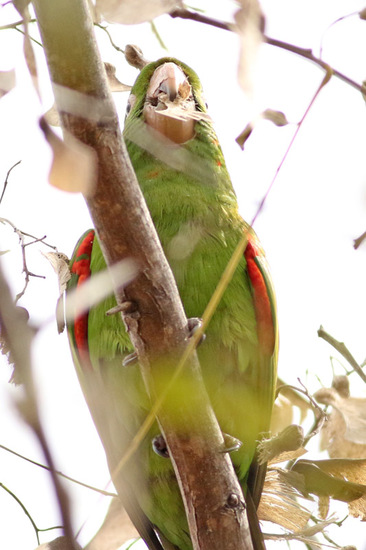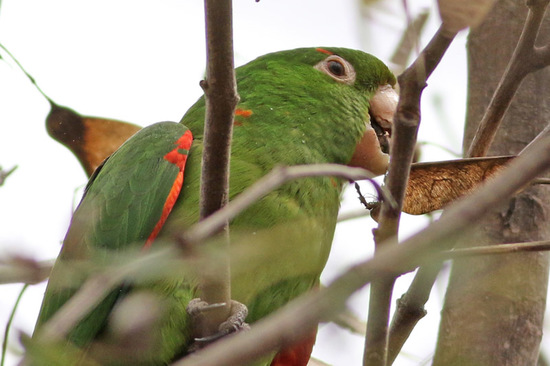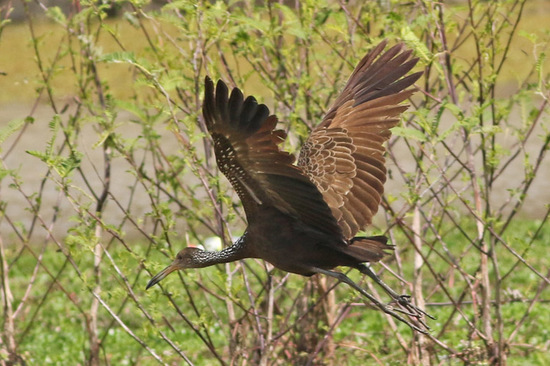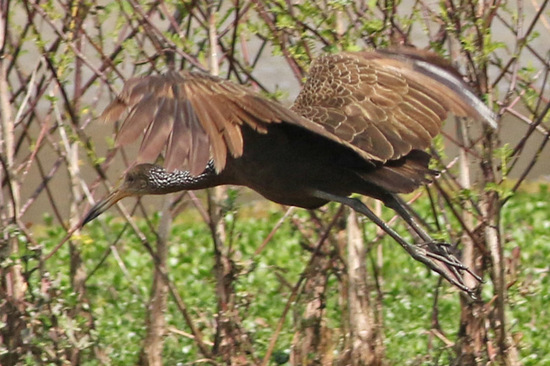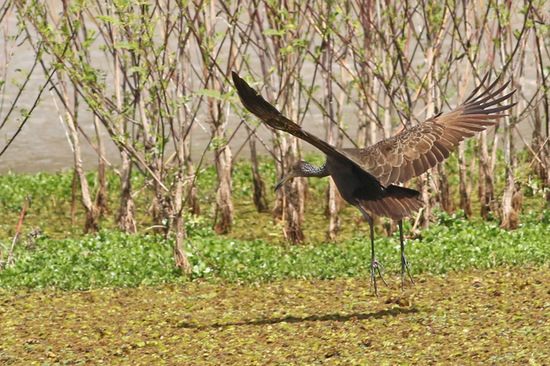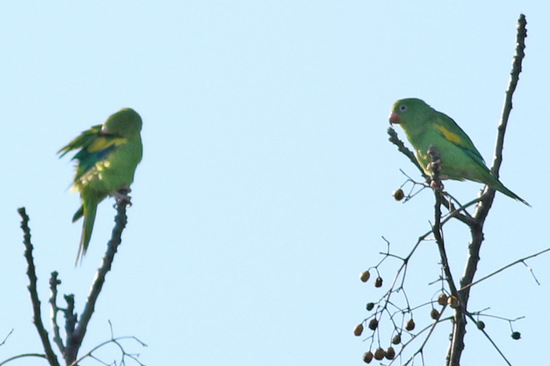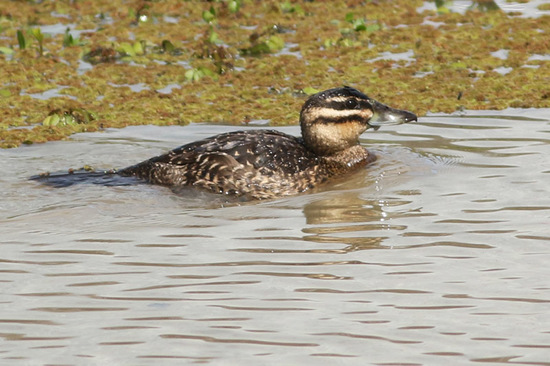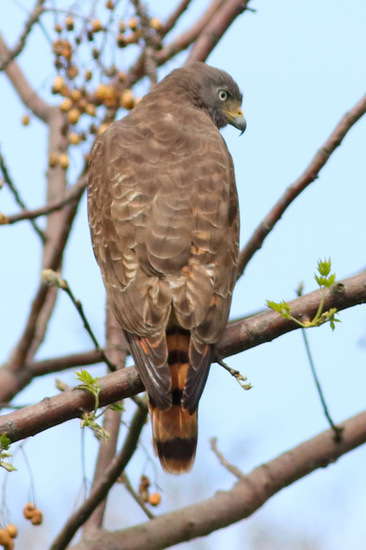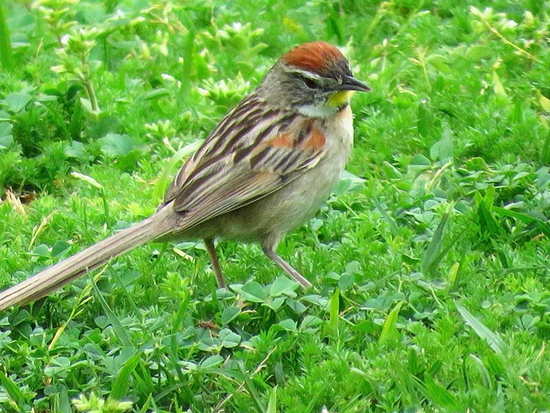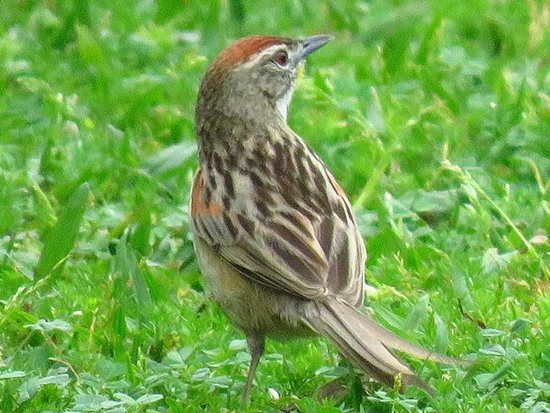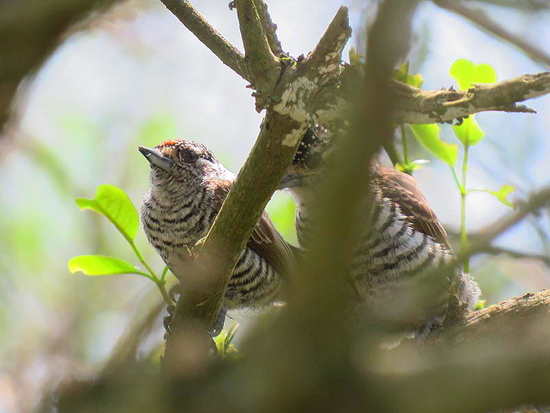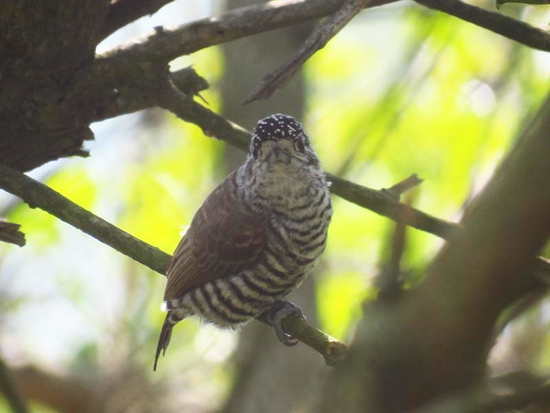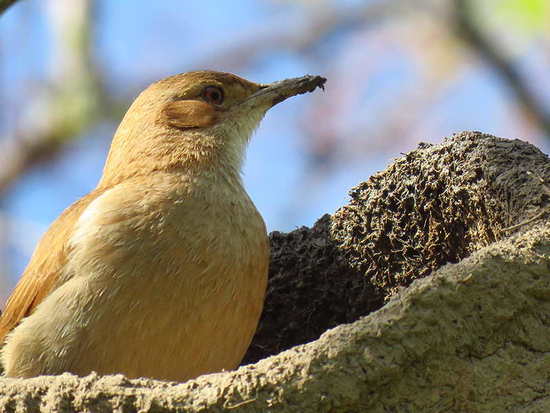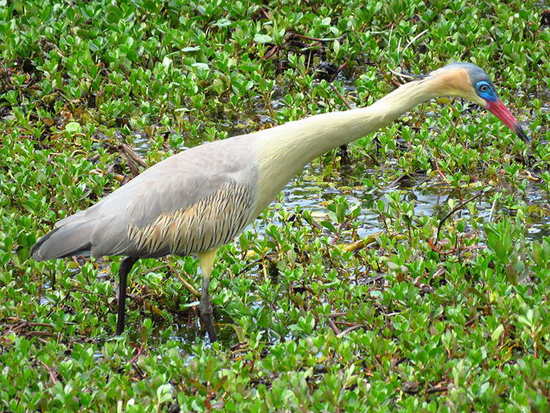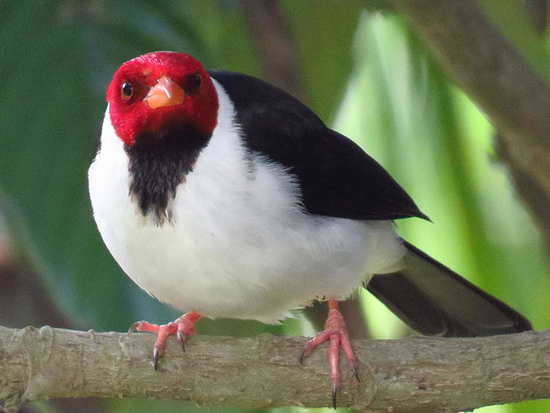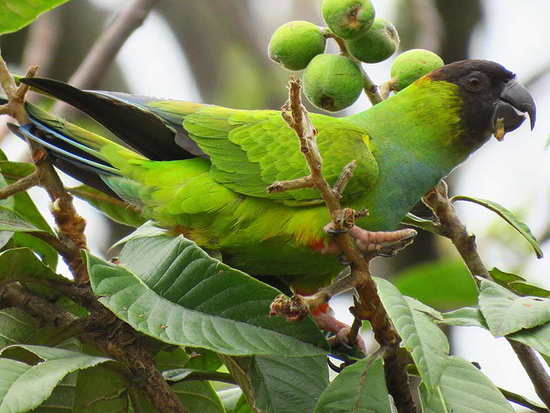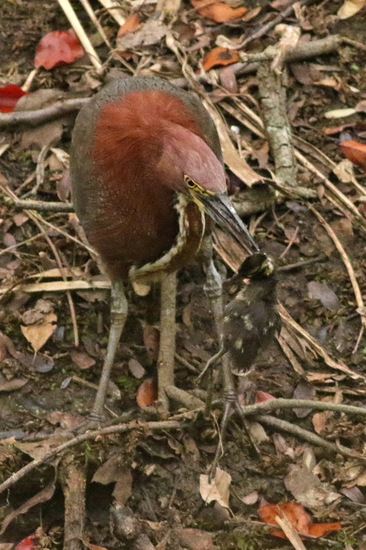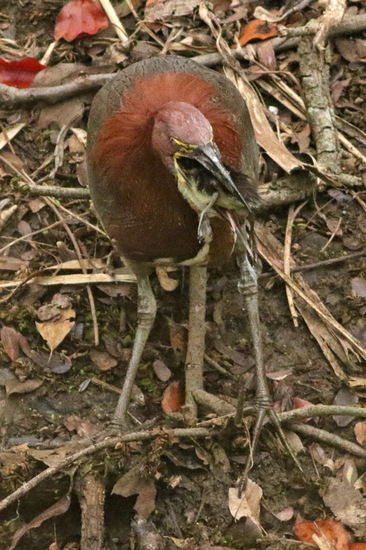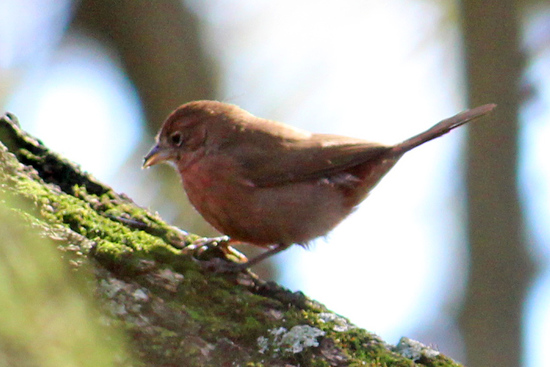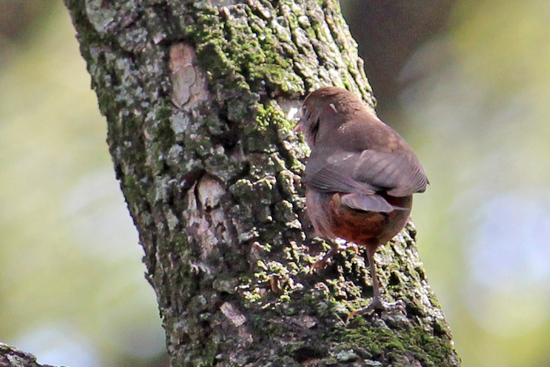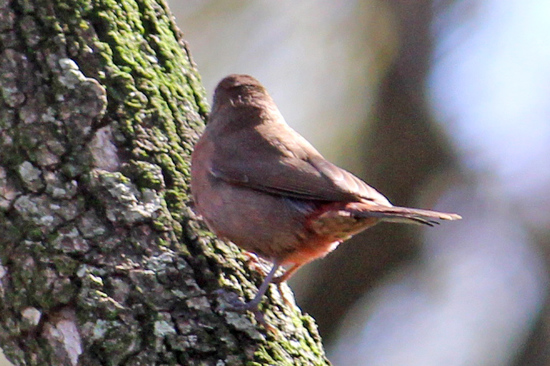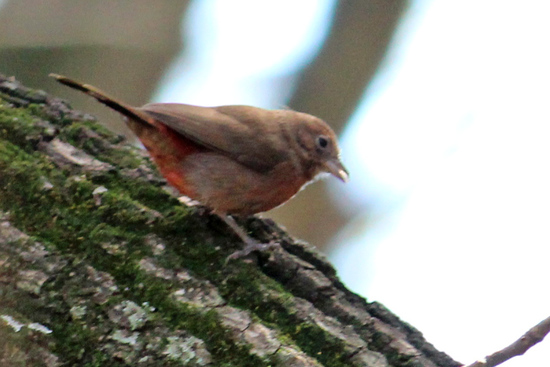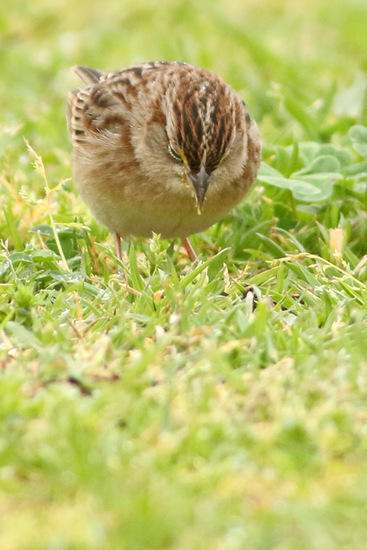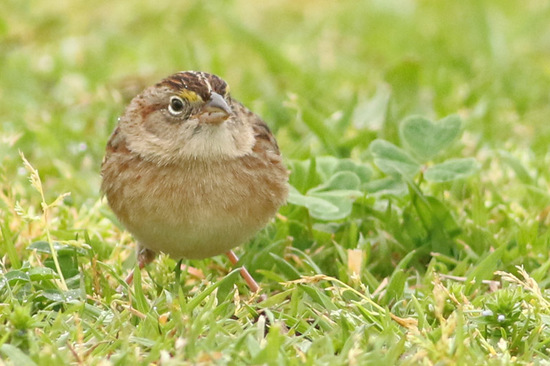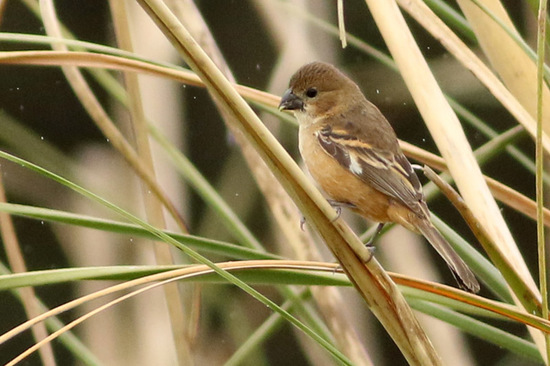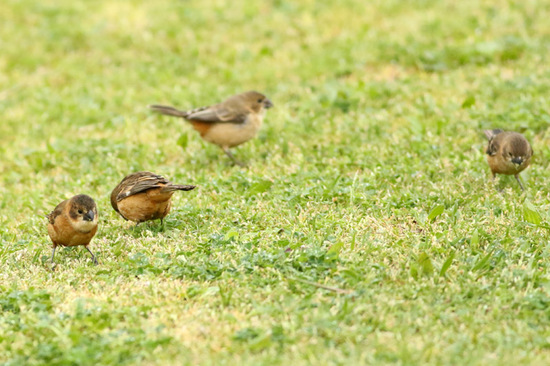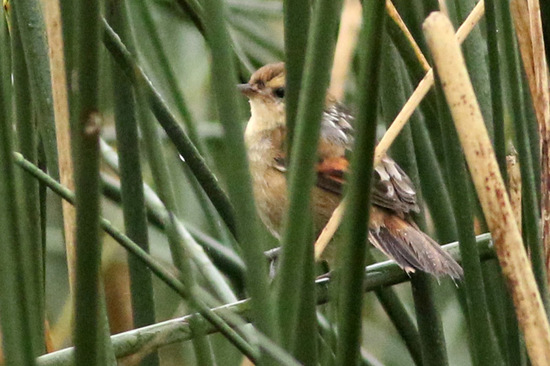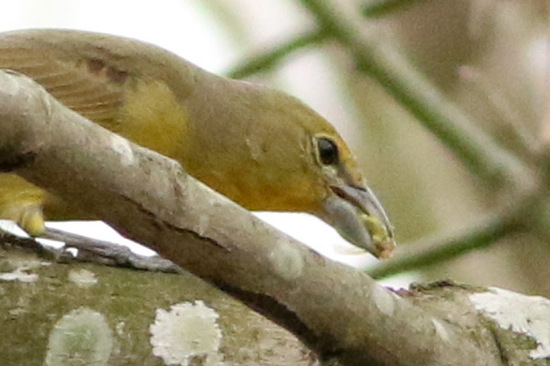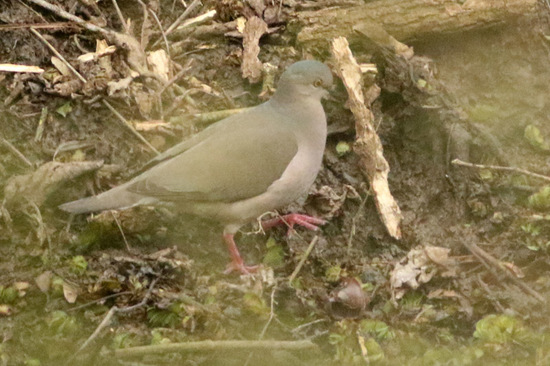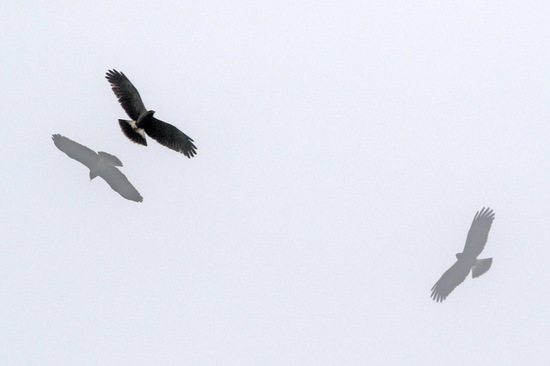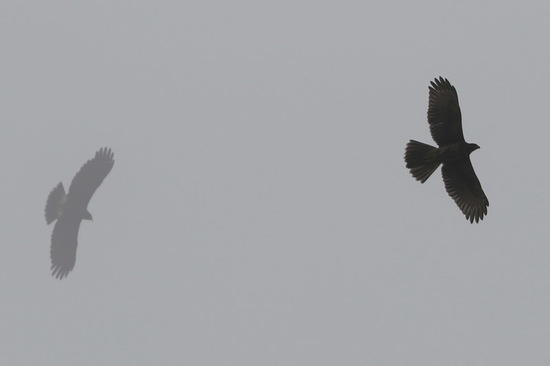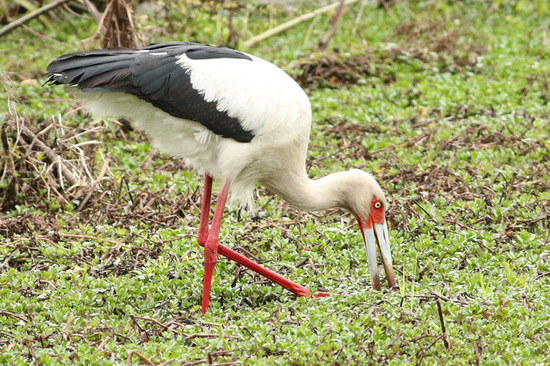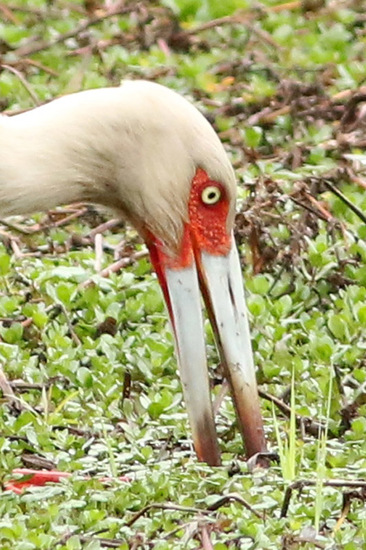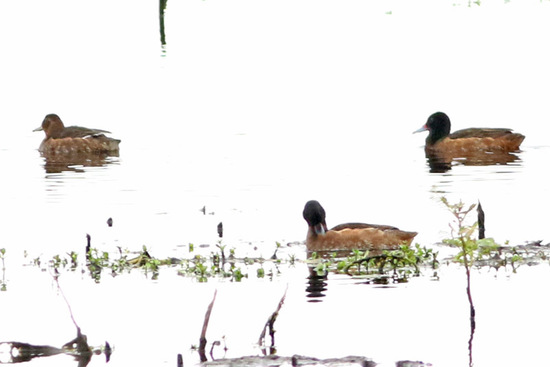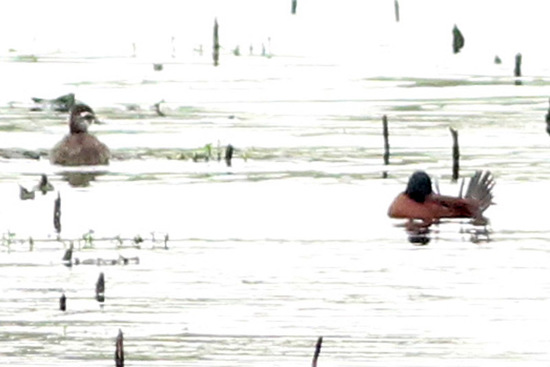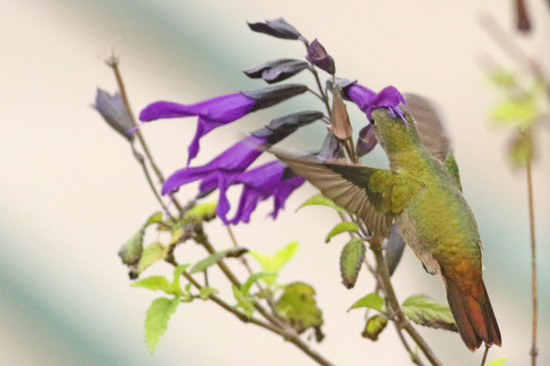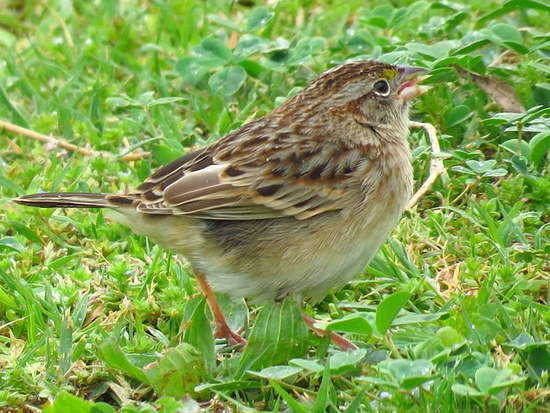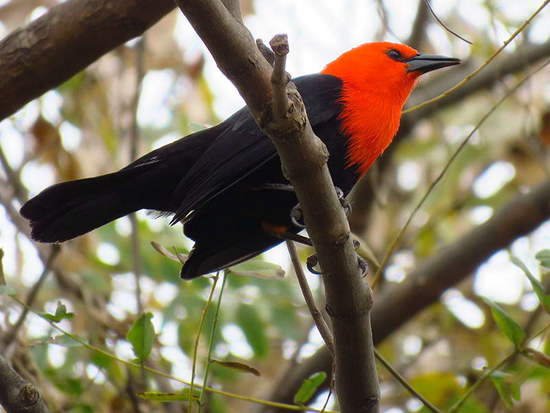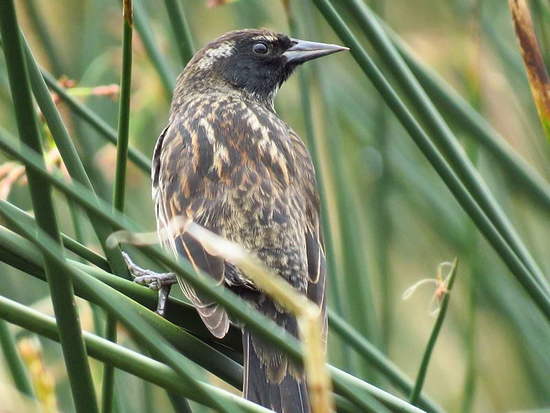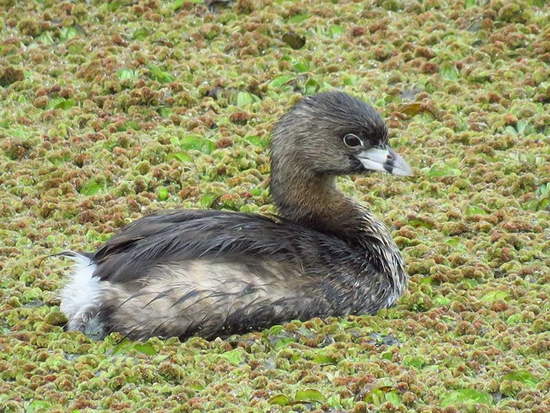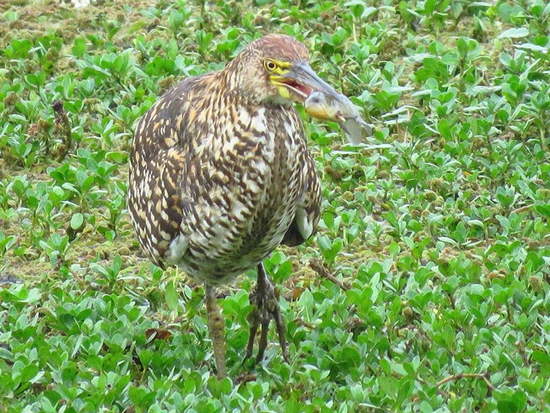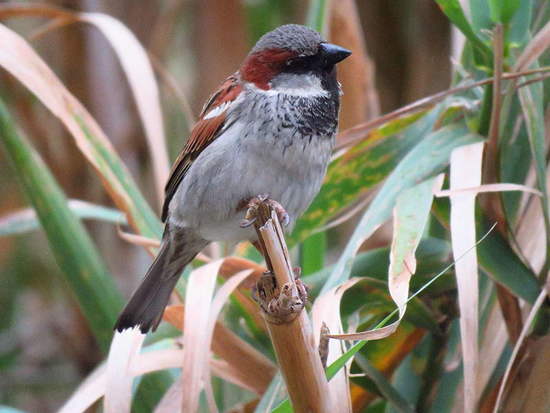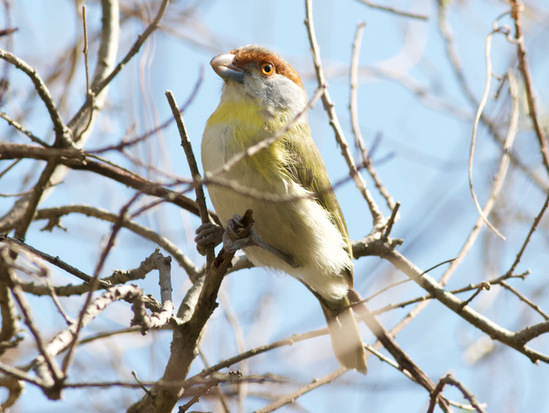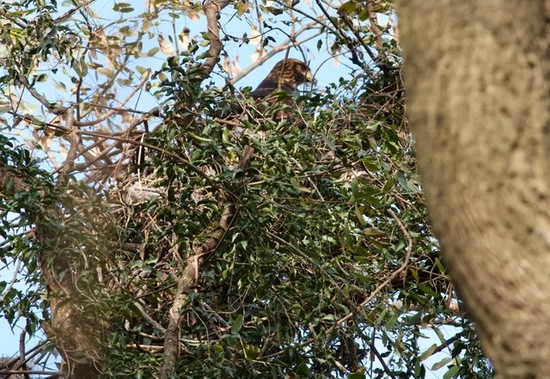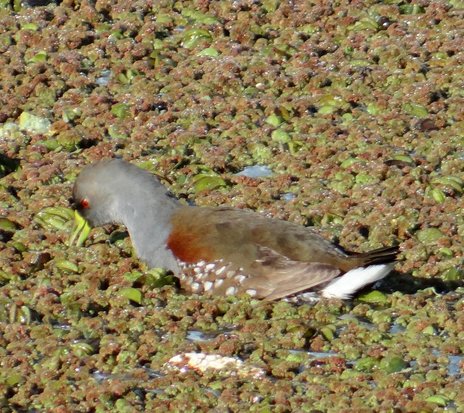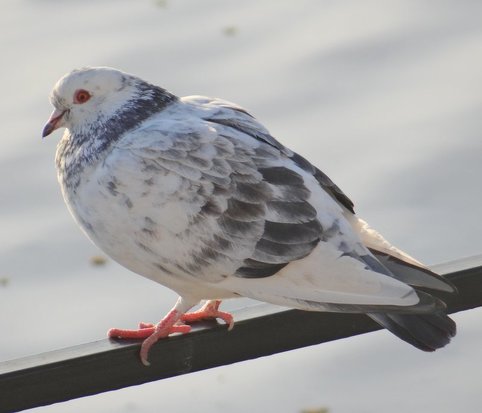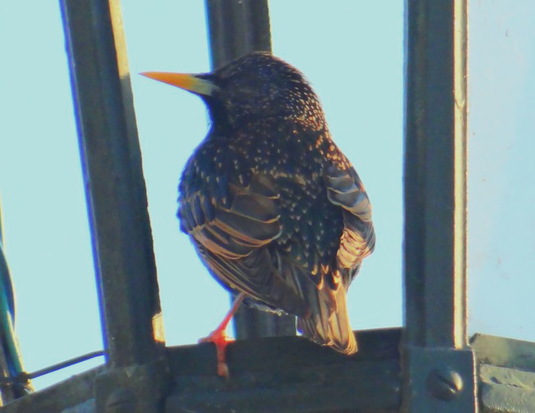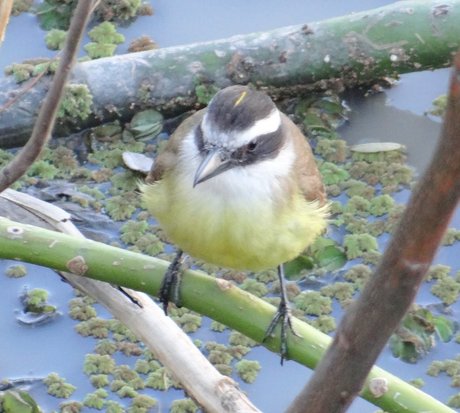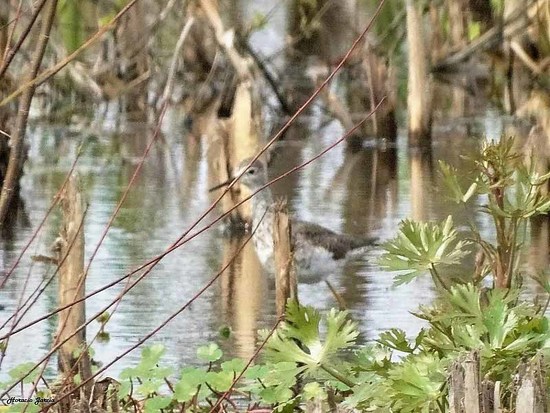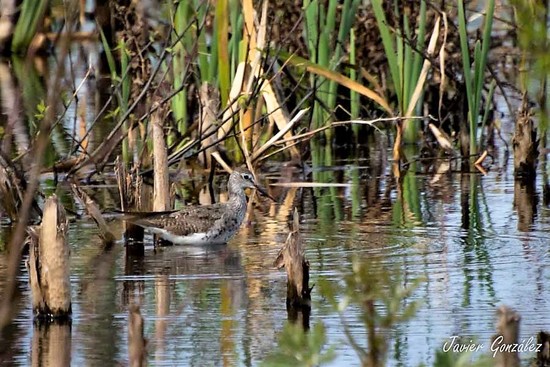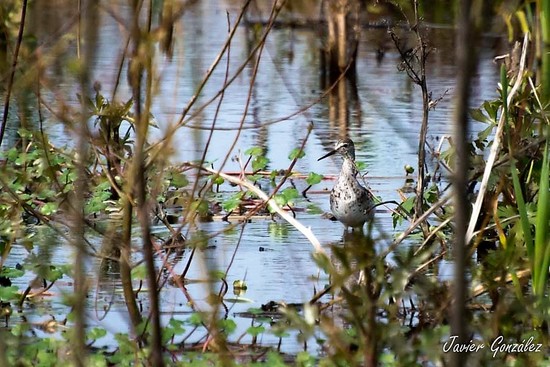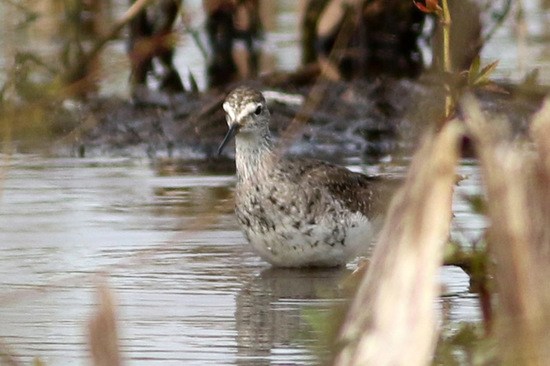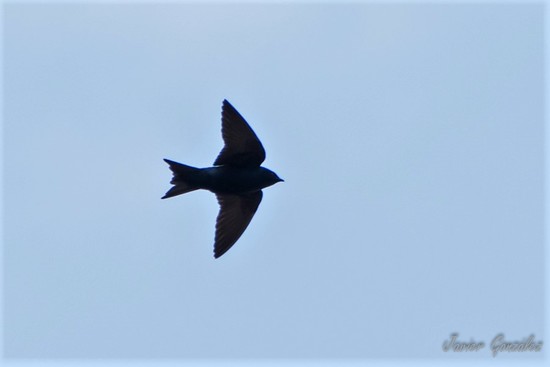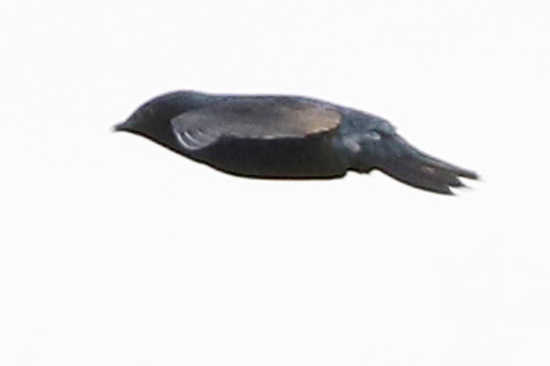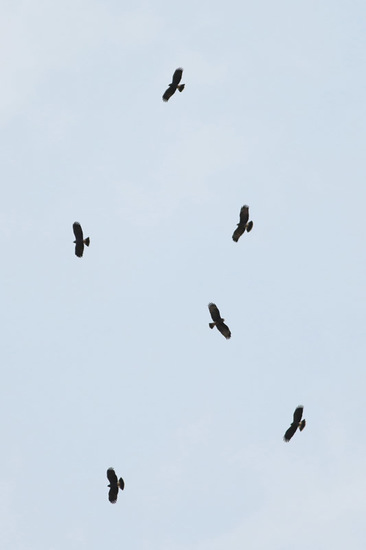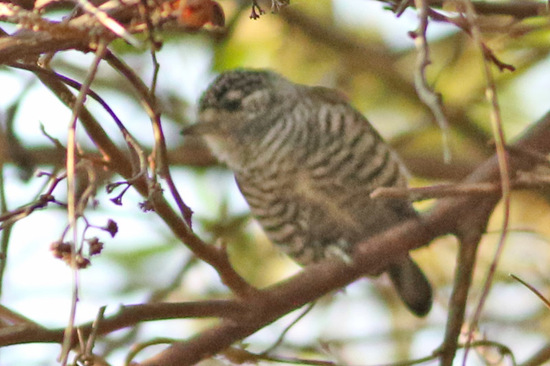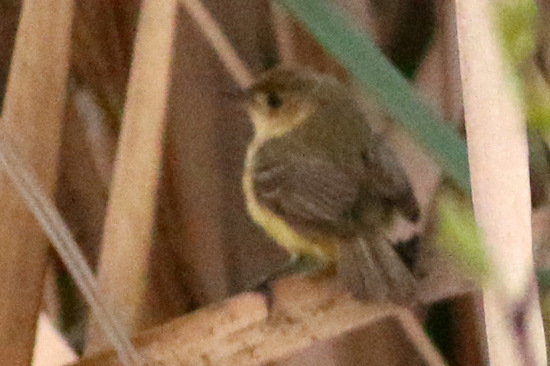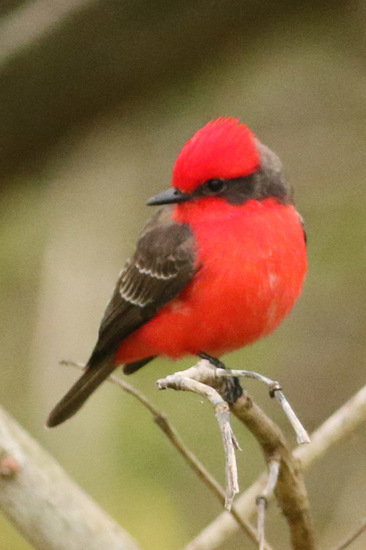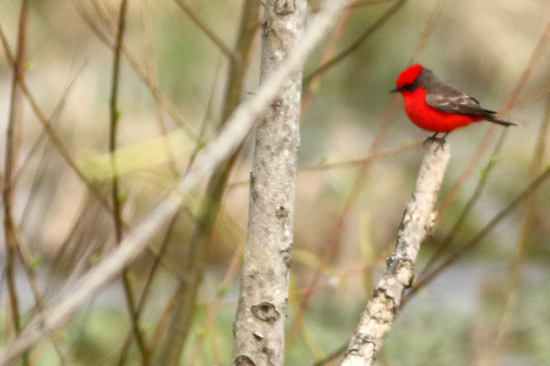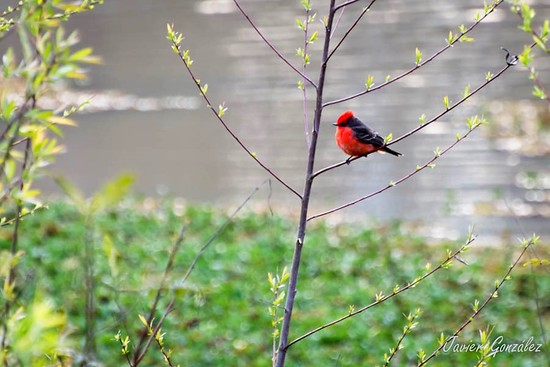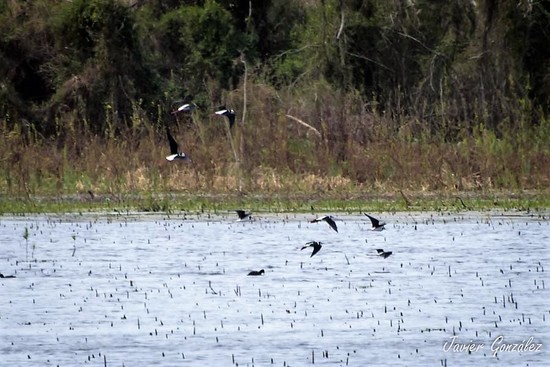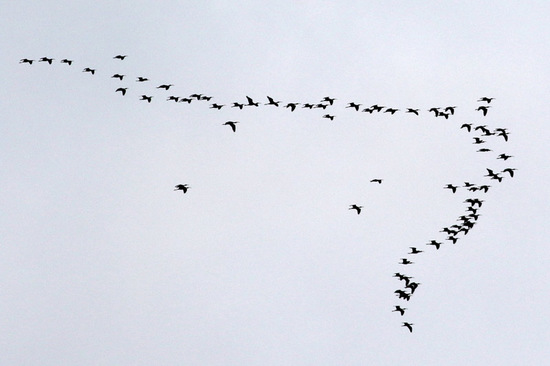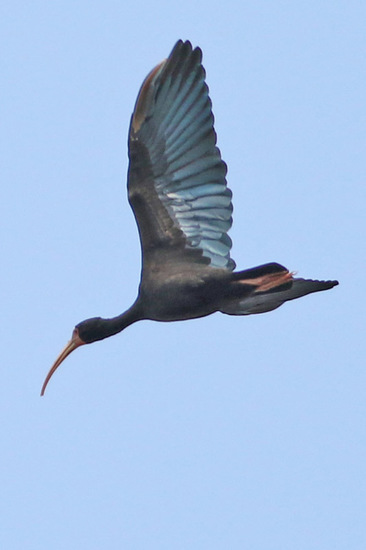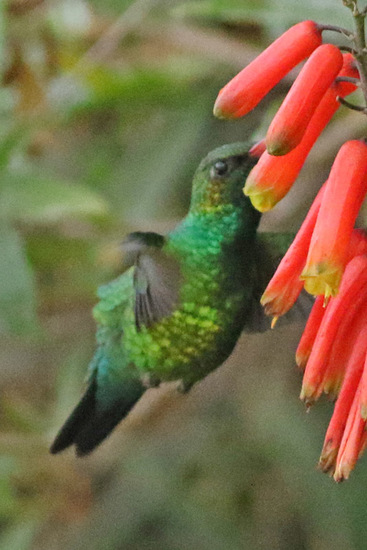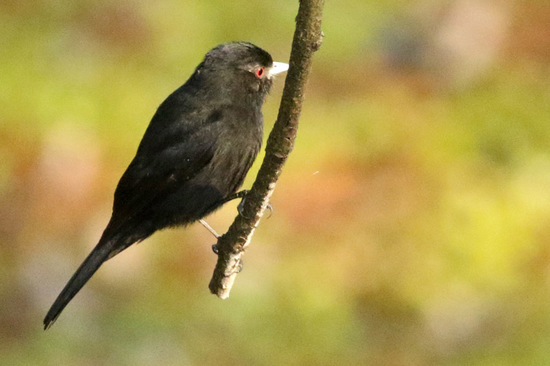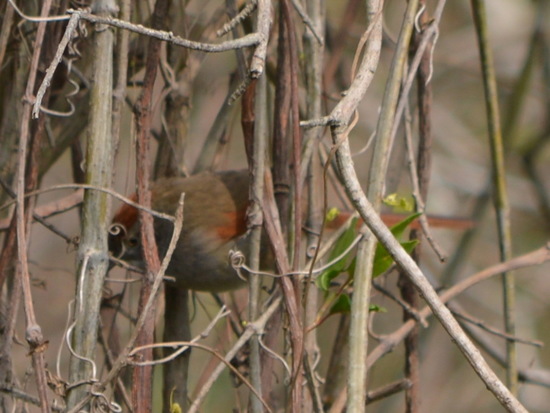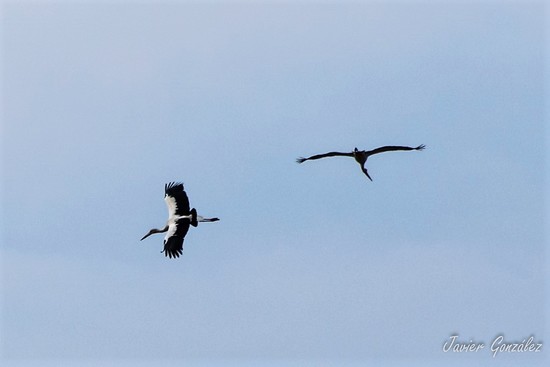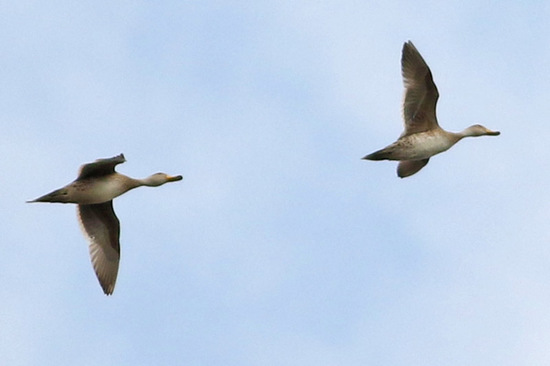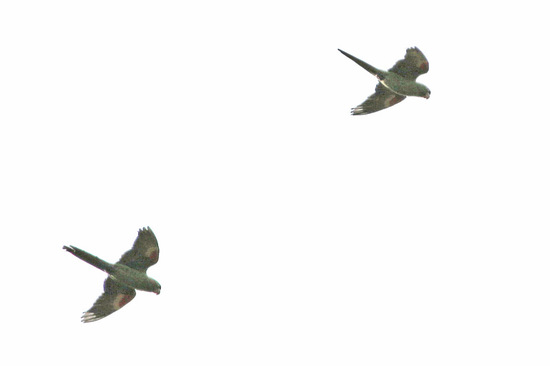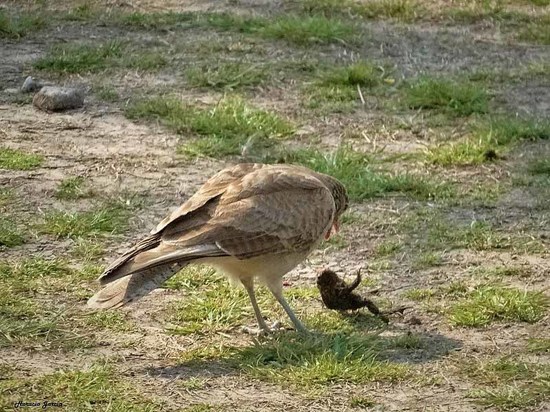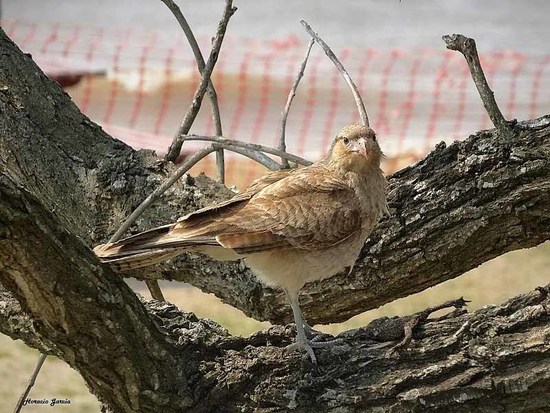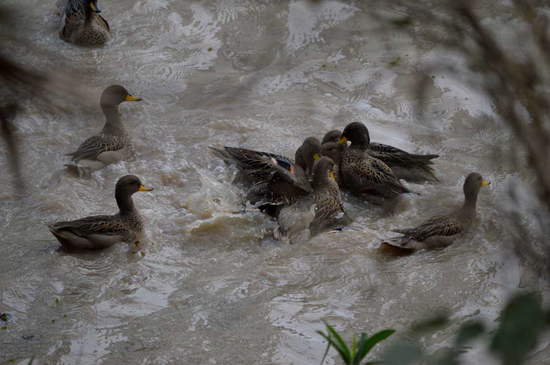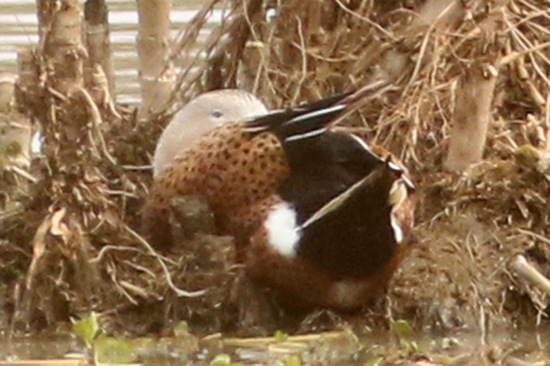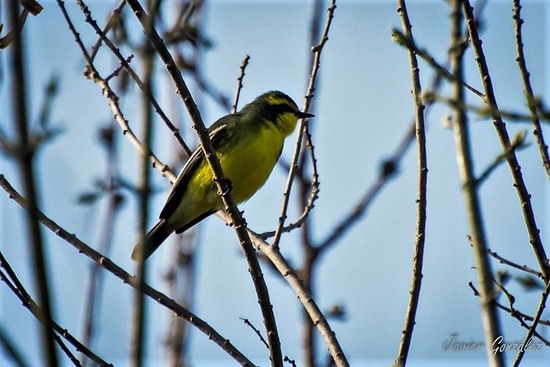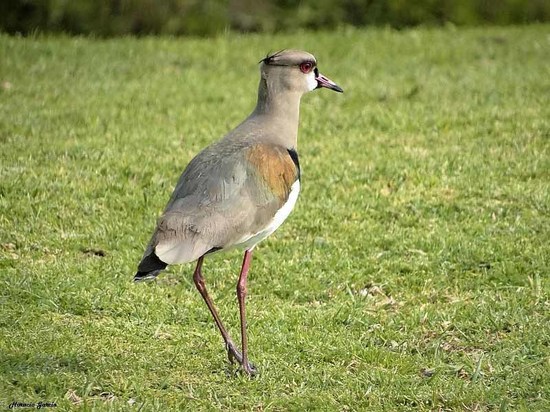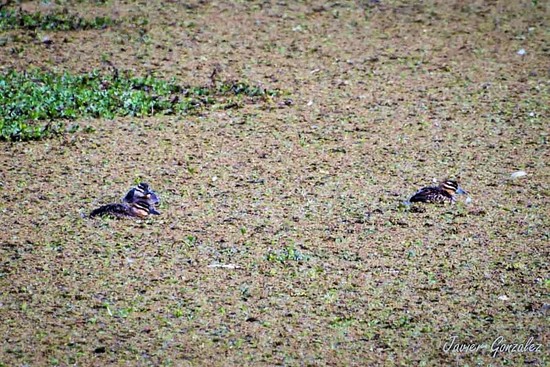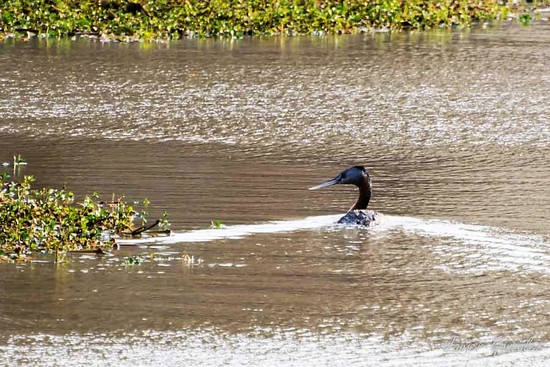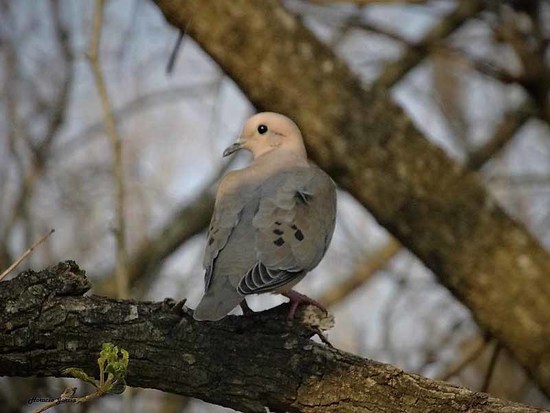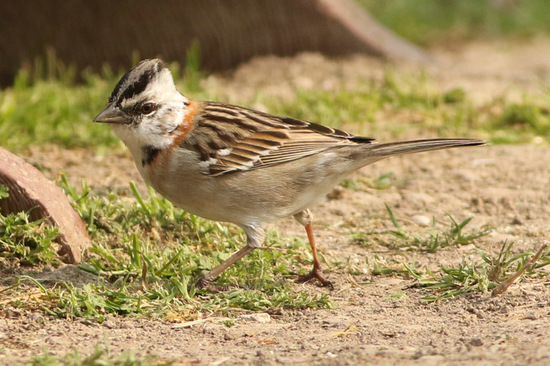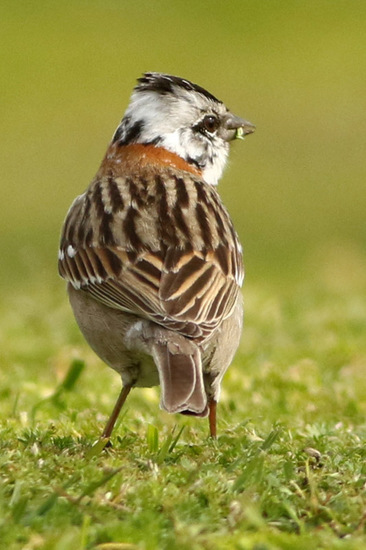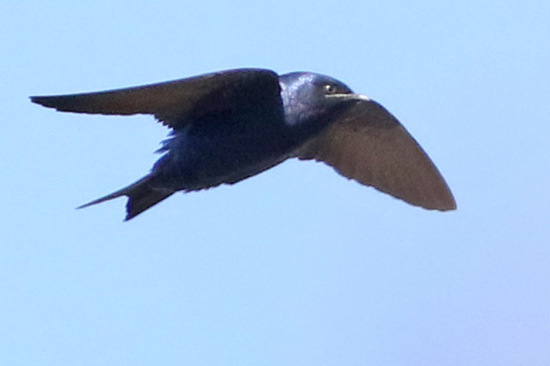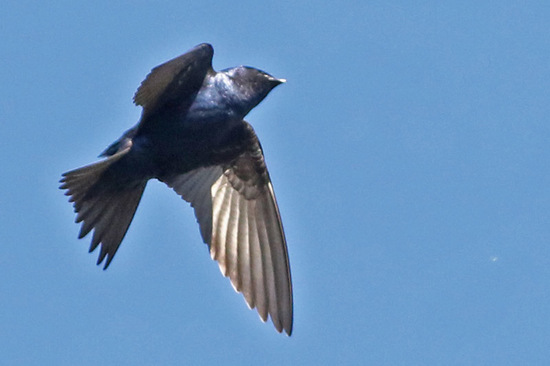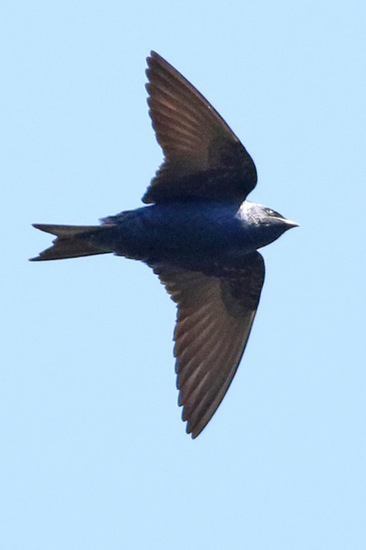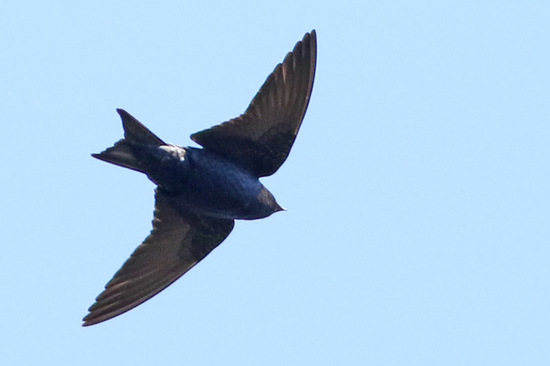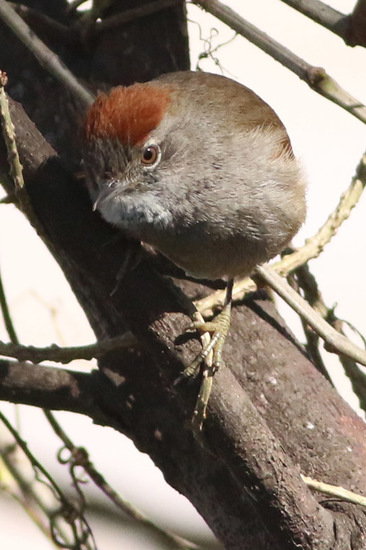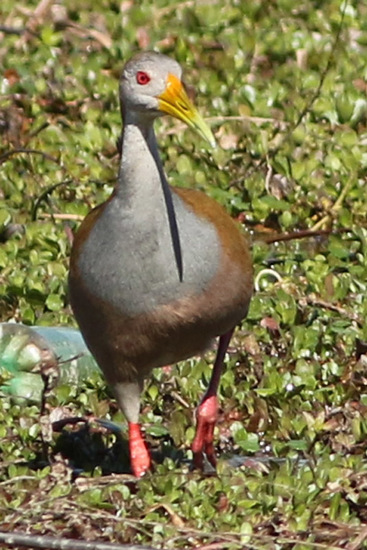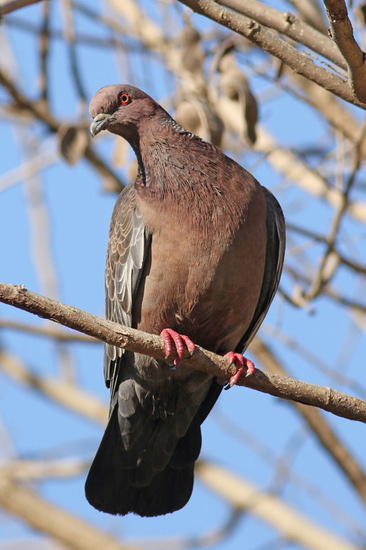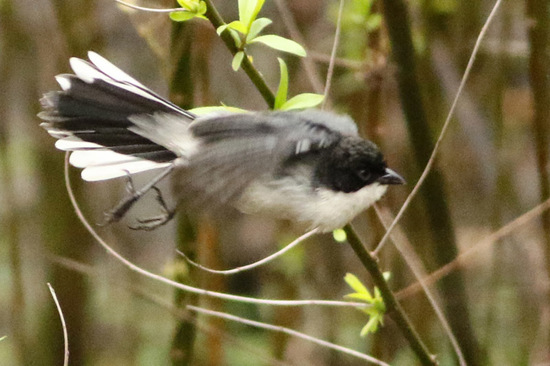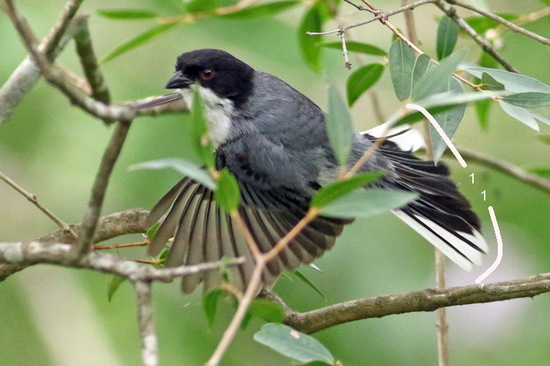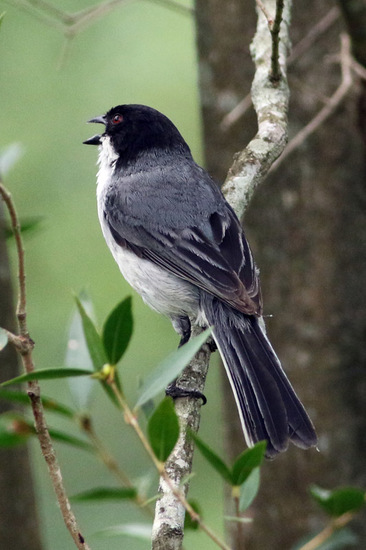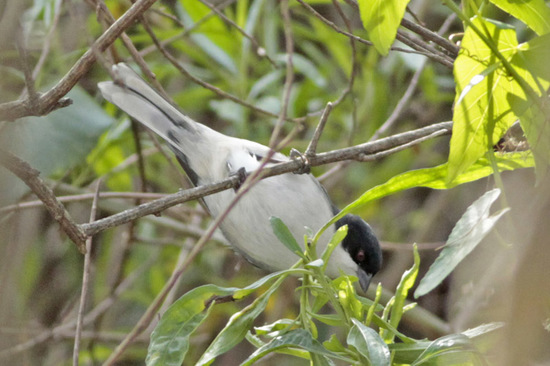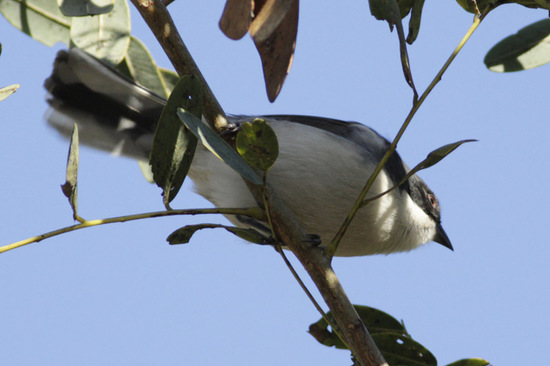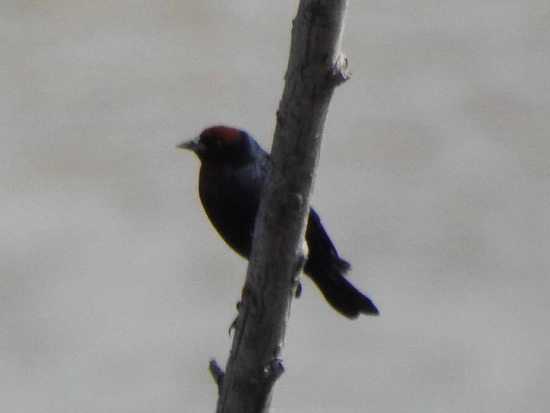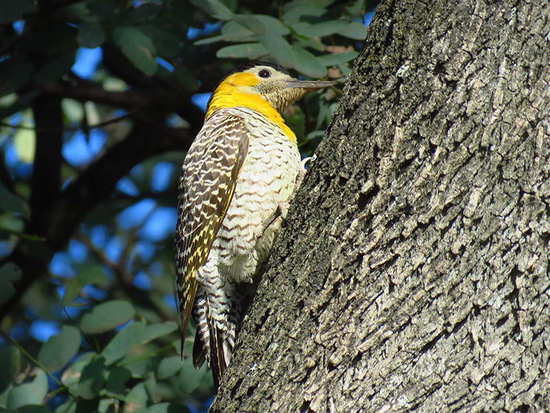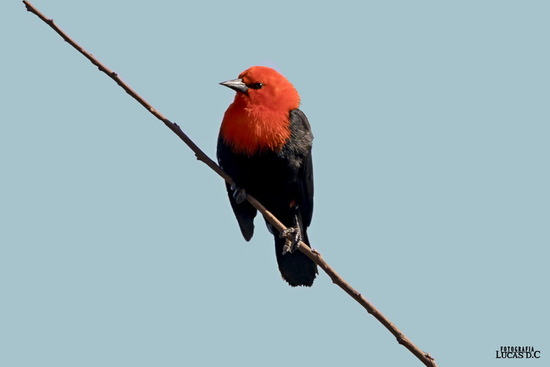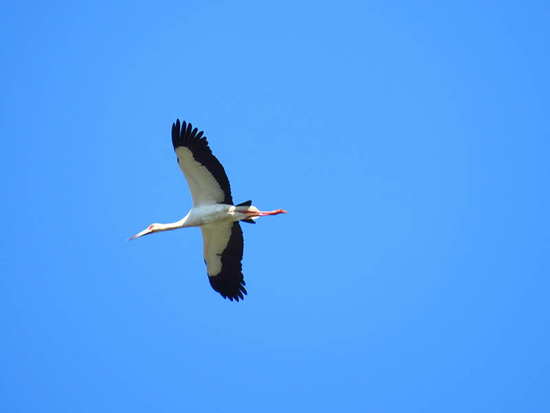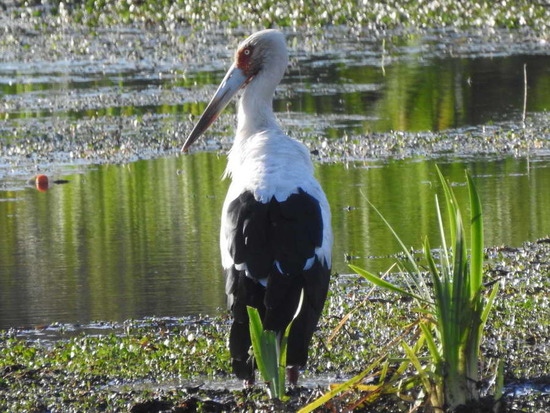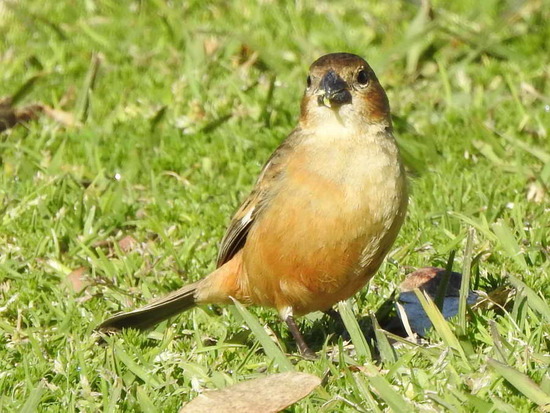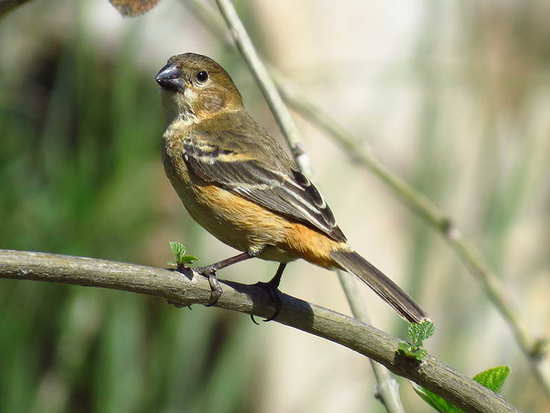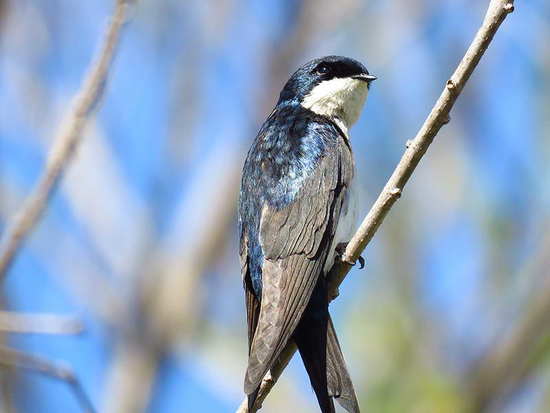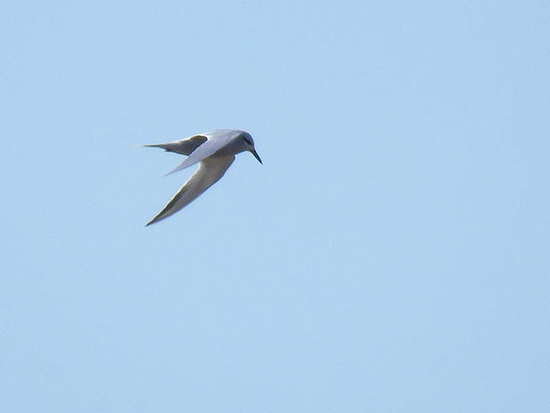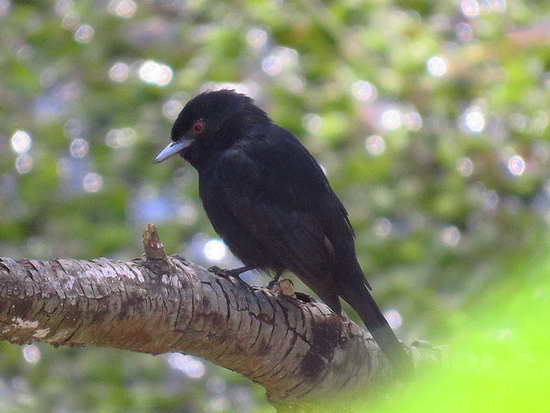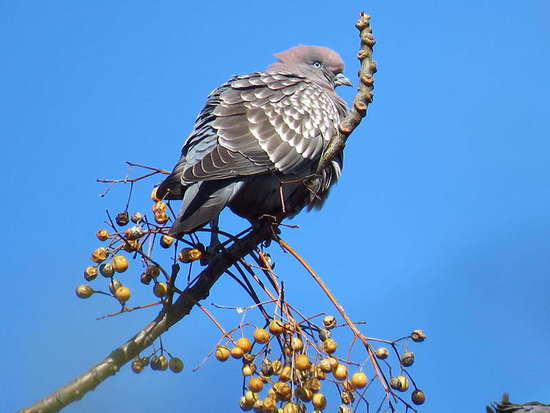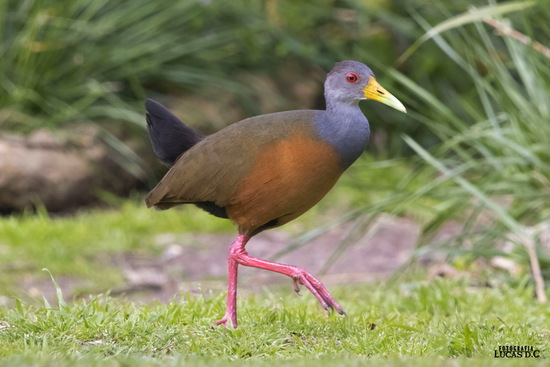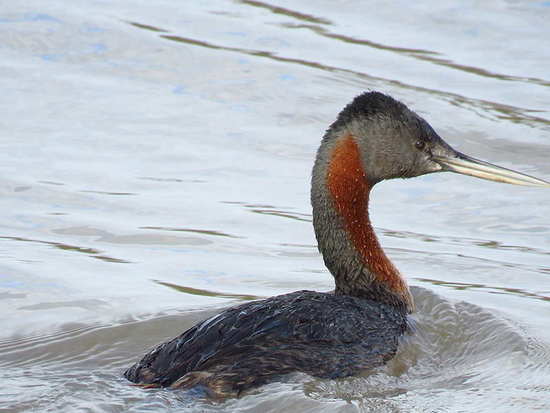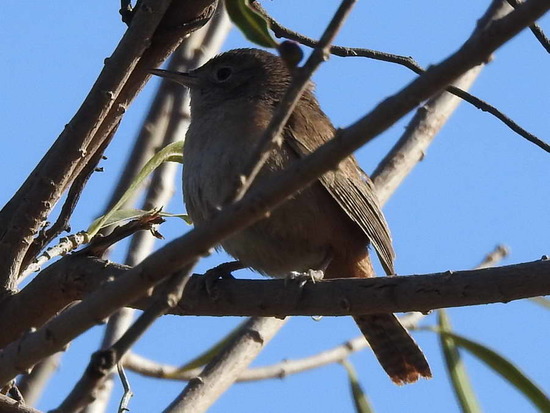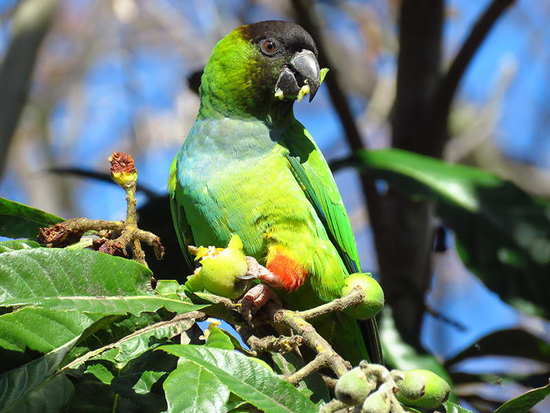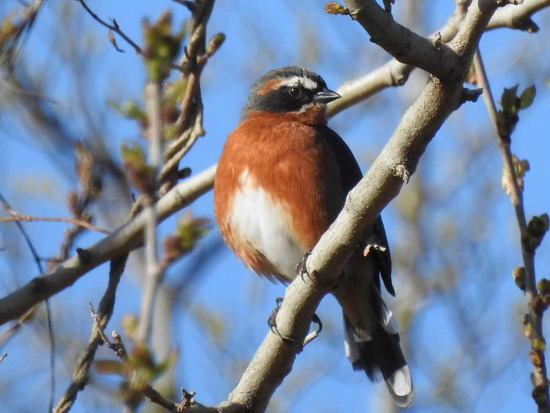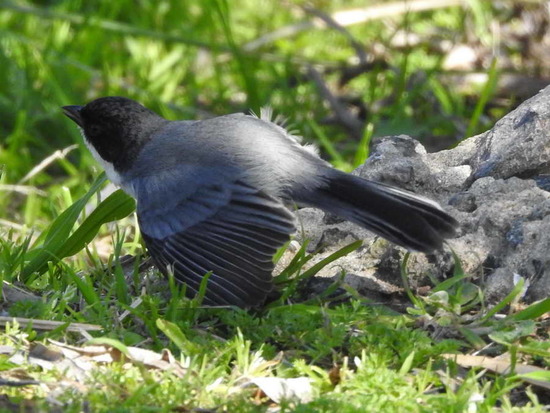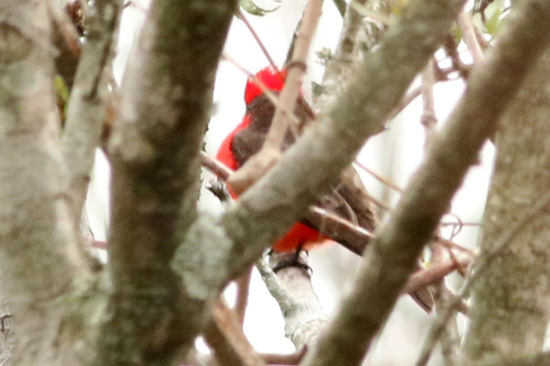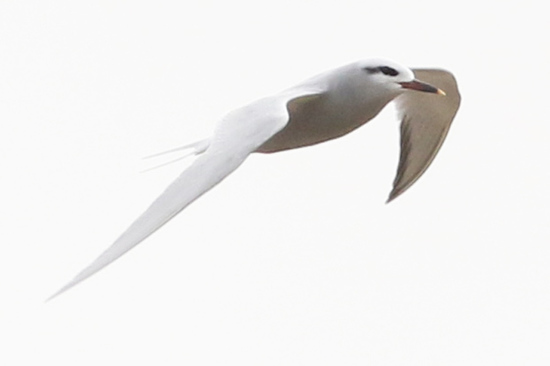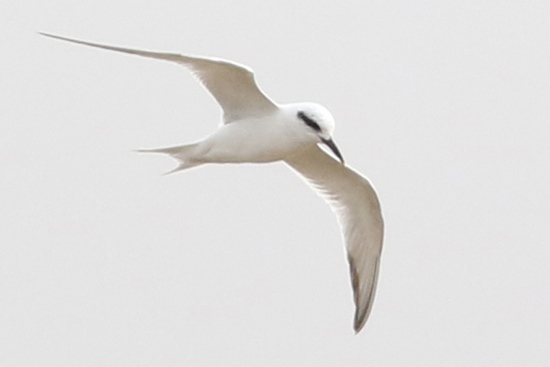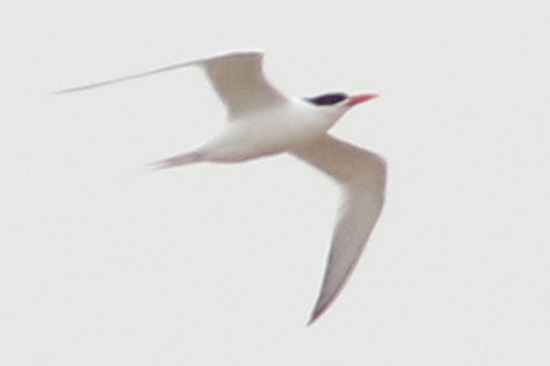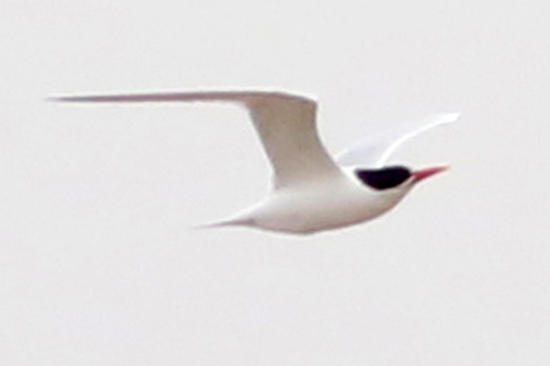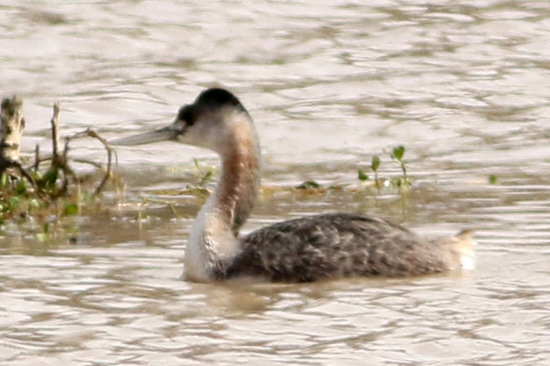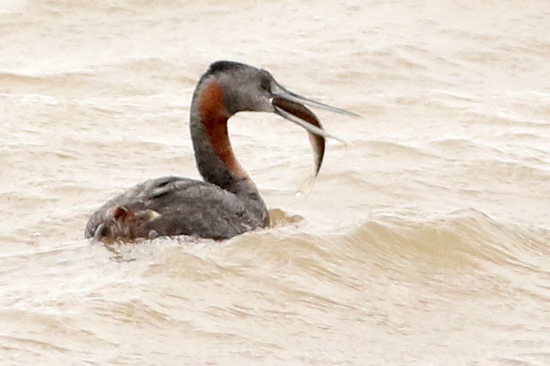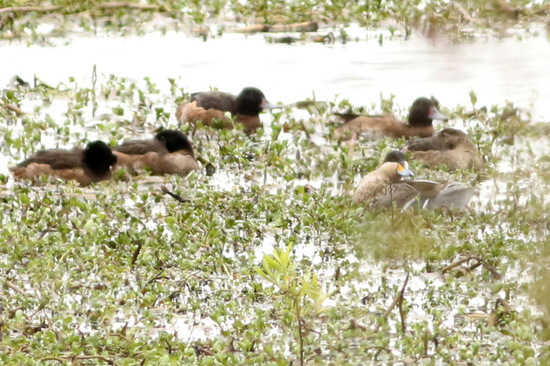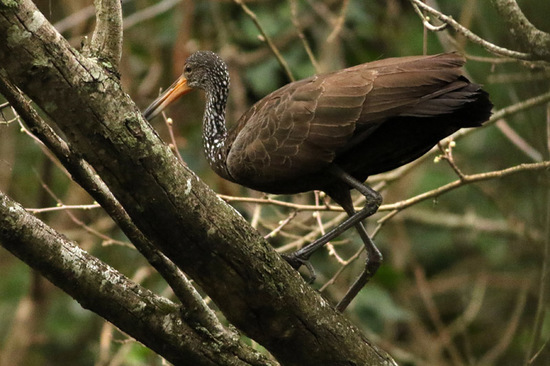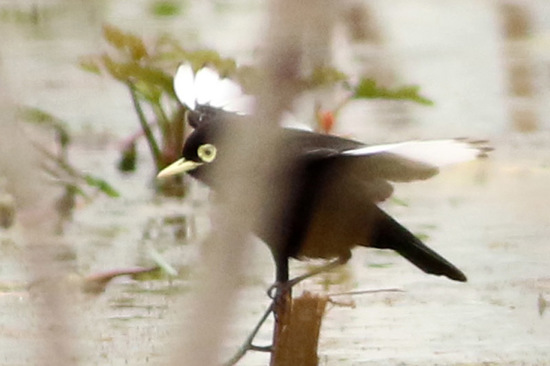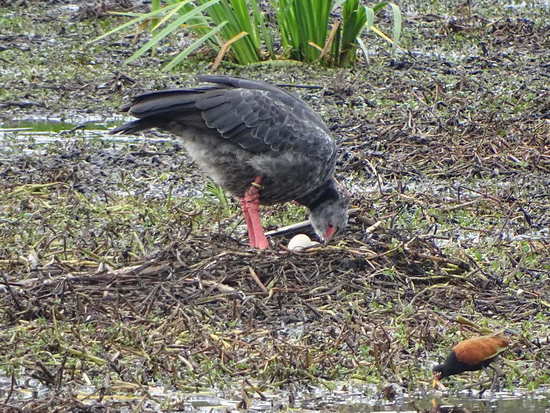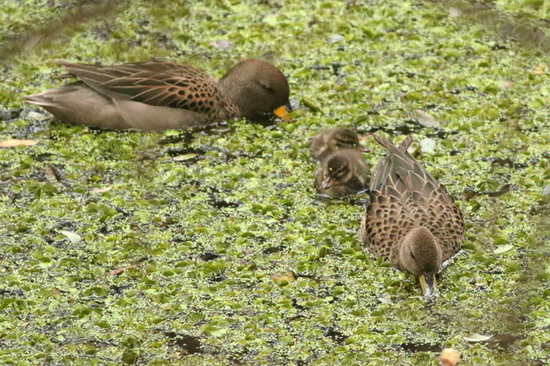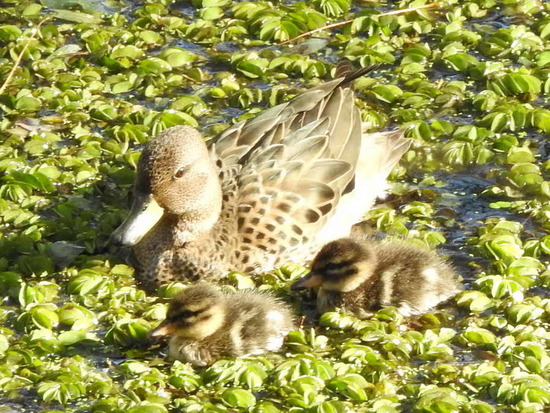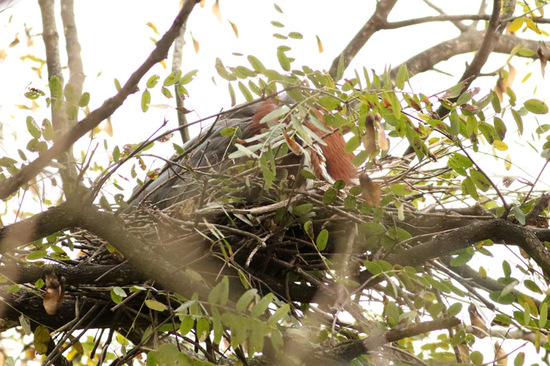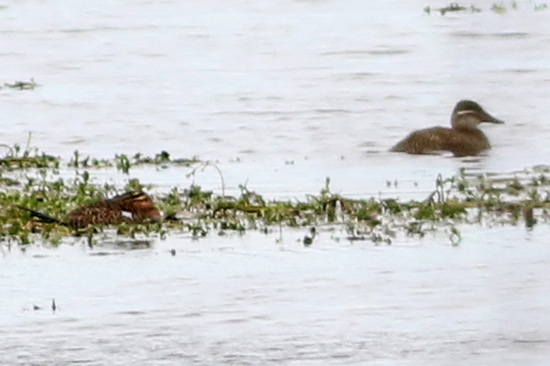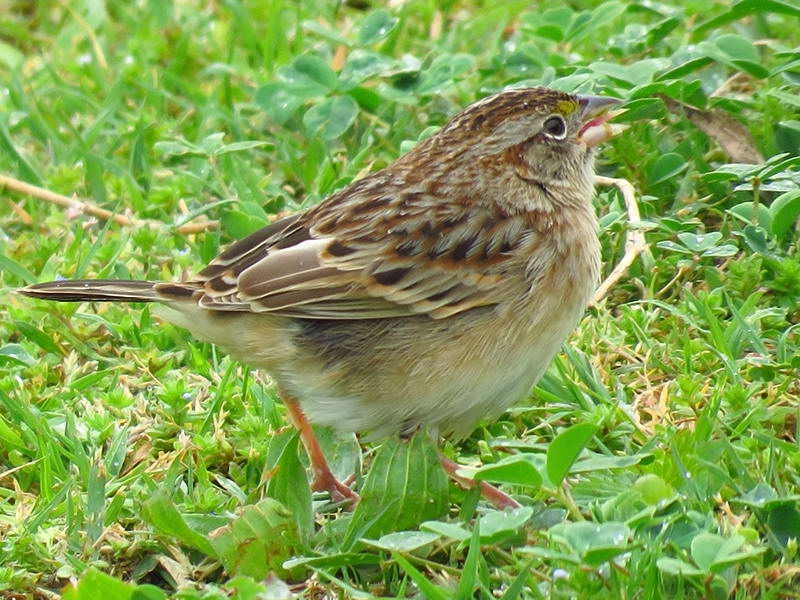News - September 2018
| Flora | |
|
Ranunculus apiifolius
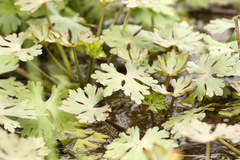 © J. Simón Tagtachian
|
Ranunculus apiifolius
 © Cora Rimoldi
|
|
Chinese wisteria
Wisteria sinensis 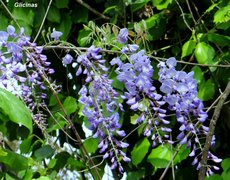 © Nicolás Giorgio
|
Chinese wisteria
Wisteria sinensis 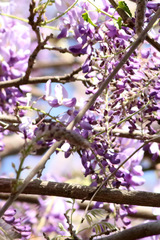 © J. Simón Tagtachian
|
|
Prunus
Prunus sp. 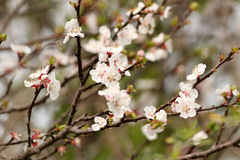 © J. Simón Tagtachian
|
Prunus
Prunus sp. 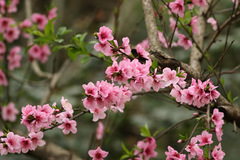 © J. Simón Tagtachian
|
|
Bugweed
Solanum granulosum leprosum 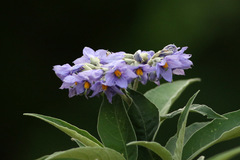 © J. Simón Tagtachian
|
Lantana megapotamica
Lantana megapotamica  © J. Simón Tagtachian
|
|
Silk floss tree
Chorisia speciosa 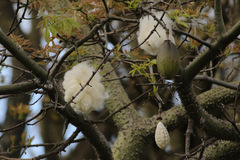 © J. Simón Tagtachian
|
Silk floss tree
Chorisia speciosa 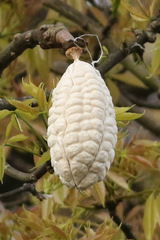 © J. Simón Tagtachian
|
|
Three-cornered leek
Allium triquetrum 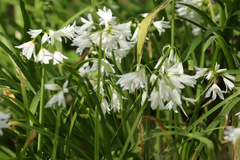 © J. Simón Tagtachian
|
Wild teasel
Dipsacus fullonum 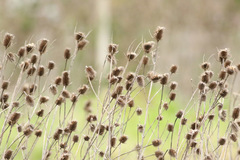 © J. Simón Tagtachian
|
|
Water yellow flag
Iris pseudacorus 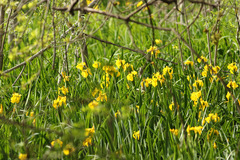 © J. Simón Tagtachian
|
Calla lily
Zantedeschia aethiopica 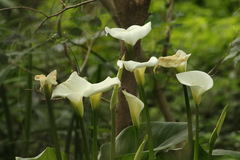 © J. Simón Tagtachian
|
Golden-crowned Warbler
Basileuterus culicivorus
30-09-18 © Cora Rimoldi
As we had already assumed the reserve would be closed on Sunday 30th due to the Saturday's storm. The program was to walk along the sidewalk and find the large-billed tern, which Horacio had spotted on one of the islets at the Brasil end on Wednesday. And there it was with its robust yellow bill tucked up at the back. We were lucky since it awoke right away and action began. It timidly bothered the pochards, which did not react. Before such indifference the tern picked on the silver teal on the left. The teal did move aside due to its cocky attitude. Satisfied the tern began to preen. And the first raindrops began to fall but...
30-09-18 © Cora Rimoldi
we wanted to see the tricoulored back with open wings and stayed. Again the tern charged at the pochards, which did not get upset. Defeated it took flight, made a big turn to finally sit on the pole. Satisfied with the show we returned to Viamonte. The last part of the video is repeated in slow motion.
30-09-18 © Cora Rimoldi
As we were walking back to Viamonte and much to our surprise the tern surpassed us and gave us another flight demonstration. It flew in long and pronounced waves sliding down to the water and gaining height. It was clearly fishing. It did pick the water on one occasion but we did not see the tern catch anything.
Campo Flicker
Colaptes campestris
30-09-18 © Cora Rimoldi
Black-headed Duck
Heteronetta atricapilla
30-09-18 © Cora Rimoldi
Breeding time
We normally watch the tiger-heron catch a fish or an eel, here the prey is yellow-billed teal duckling. The duckling belonged to a family in Canal Viamonte and this tiger-heron may be the one nesting a bit further on a tipu tree. The Saturday before the ducklings had been attacked by a Harris's Hawk and saved their skin. Their parents protected them but this Saturday this duckling was not that lucky. The video does not show the tragic end.
22-09-18 © Jorgelina Pérez
Nacunda nighthawk
Chordeiles nacunda
19-09-18 © Julián Hernández
(View in full scene recommended. Click on bottom right icon)
"A nacunda nighthawk (Chordeiles - Podager- nacunda) taking off from a vegetation mat in Coypu Pond. It flew off when two caracaras (Caracara plancus) landed on the same mat searching for food. The Southern lapwings (Vanellus chilensis) moving around began to scream, chase the raptors causing a hell of a mess among all the species. Ducks also took off and so did birds (of different species) as quick as possible and in any direction. The nacunda flew in big and high circles, then round the pond flying low, near the water. The Reserve was closed on that day, though walking along the sidewalk (always carefully) gave us this pleasant surprise. Time: 5:30 pm, sunny day with scattered clouds and hot". Julián Hernández
|
Fulvous Whistling-Duck x White-faced Whistling-Duck
Dendrocygna bicolor x viduata 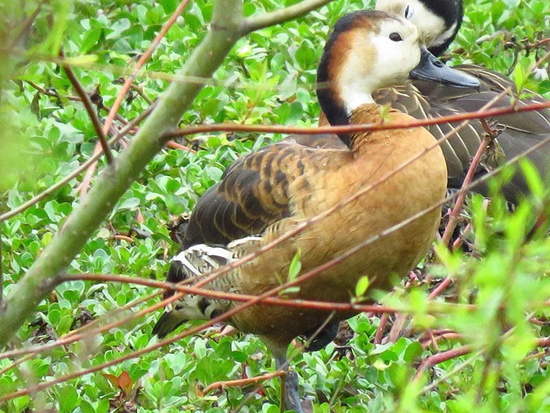 15-9-18 © Sergio Cusano
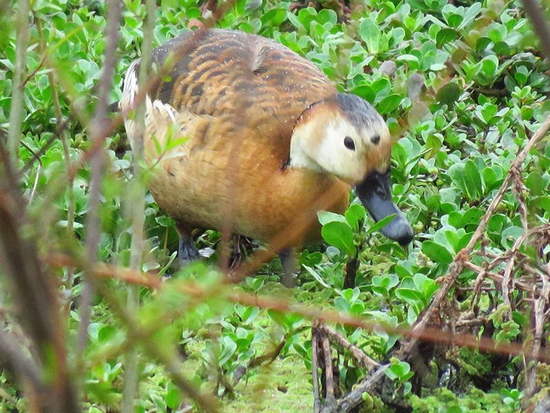 15-9-18 © Sergio Cusano
When comparing the hybrid with the fulvous whistling-duck below, th hybrid has practically the plumage of the fulvous whistling-duck in its body, except for the black and white barring on the flank. It is on the head where the wite-faced whistling-duck's characteristics are evident
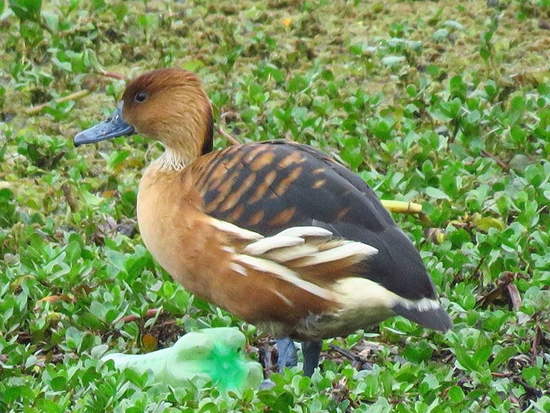 15-9-18 © Sergio Cusano
|
A las 10 de la mañana volaba este individuo solo. Dos horas más tarde un grupo de 20
The 10 am vermilion flycatcher
The 12 am vermilion flycatcher
The 5 pm vermilion flycatcher
|
Hybrid Whistling-duck
Dendrocygna bicolor x D. viduata 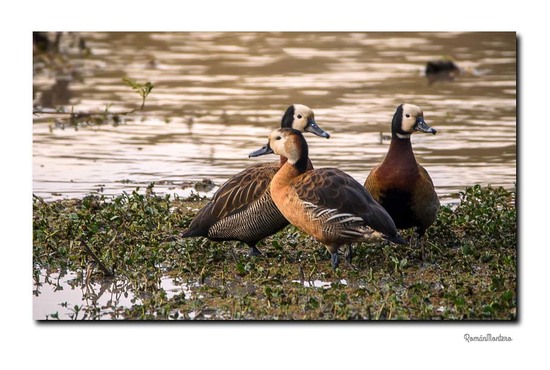 8-9-18 © Román Montero
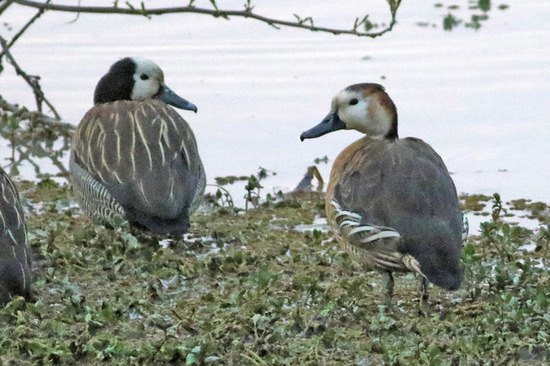 8-9-18 © J. Simón Tagtachian
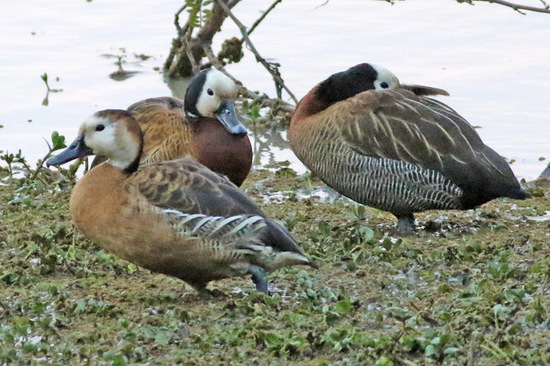 8-9-18 © J. Simón Tagtachian
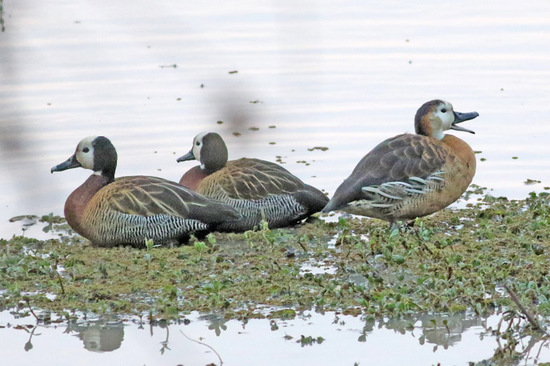 8-9-18 © J. Simón Tagtachian
Certainly the same that Marco photographed on August, 28th. Since it is among White-faced whistling-duck, its mother is a White-faced Whistling-Duck and its father a Fulvous Whistling-Duck
|
Rufous-collared Sparrow - Zontrichia capensis
Without the postocular and subocular black lines it seems a sparrow with a white face. A leucism. We have been seeing this bird eating for some time now along with other conspecifics
Three common swallows at the reserve
These are the three of the most common swallows at the reserve. The Brown-chested Martin Progne tapera has not popped up yet. Unlike the others which combine white and blue, though different hues, the brown-chested Martin combines it with brown
Blue-and-white Swallow Pygochelidon cyanoleuca
All-year round swallow. Ventrally white with black undertail coverts. Dorsally blue. Small size just like the white-rumped swallow.
White-rumped Swallow Tachycineta leucorrhoa
It comes to breed and then leaves. All white ventrally. Dorsally blue and white rump. This characteristic differentiates it from the Chilean swallow Tachycineta leucopyga, which comes from the south to spend winter
Grey-breasted Martin Progne chalybea
It also comes to breed and leaves. Bigger in size than the previous ones. Ventrally white with greyish. Dorsally bluish black
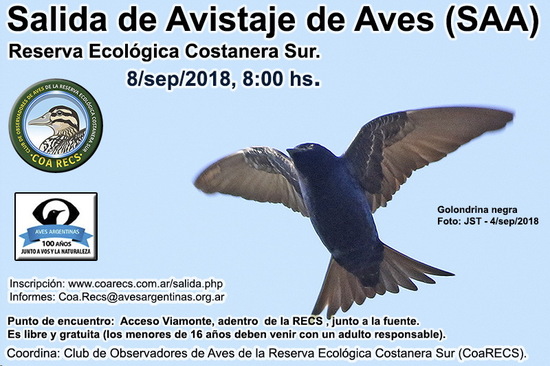 |
Tail feathers - Black-capped Warbling-Finch
Not too frequently do we have the chance to see the black-capped warbling-finch's tail completely open. Moving restlessly and quickly in the bushes we can hardly discover this detail. But we must pay attention to it.
The tail feahters are known as rectrices. They are used to steer and brake when in flight. Only the central pair is attached to the pygostyle (last ossification of the column formed by several vertebrae fused). The remaining feathers are inserted in a fiber adipose mass.
The tail feahters are known as rectrices. They are used to steer and brake when in flight. Only the central pair is attached to the pygostyle (last ossification of the column formed by several vertebrae fused). The remaining feathers are inserted in a fiber adipose mass.
The number of rectrices changes with the species and it is paired. Feathers are counted from the center outward. Passeriformes have 12 rectrices.
When closed and from a dorsal point of view the central pair of rectrices is seen. The remaining feathers are stacked beneath them. As the tail spreads, the rectrices slide in a fan-like way. Half to one side and the other half to the other side. This is when we can see this white triangular design on both sides in the Black-capped Warbling-Finch.
Stiff-tailed ducks



